The school year is its own animal that seems to envelope our whole family with busyness and, at times, chaos. Nevertheless, the birds don’t care, and last school year they REALLY didn’t care. Prior to last school year, I had started restricting my long-distance chases to just life birds, exceptions being made for state birds that are super convenient. Even under these strict, self-imposed protocols, I found myself on the road a lot last year to go after genuine life birds that showed up in Minnesota. So here’s a quick recap of those birds.
Roseate Spoonbill–August 26, 2018
Late last summer, Spoonbills started popping up all across the upper Midwest. Minnesota birders were on high alert for a first state record at any moment. The honor of that find goes to Kevin and Cindy Smith who first discovered the bird on the Washington County side of the Mississippi River the morning of the 26th. Unfortunately for other birders, it only stayed about 20 minutes before it flew across the river into Dakota County, giving Kevin and City Roseate Spoonbill in two Minnesota Counties while every other birder in the state was still at zero Spoonbills. There was a collective sigh in the Minnesota birding world as it was not refound. At least, not until the afternoon when Jim Pifher refound the (supposedly same) bird at the Old Cedar Avenue Bridge on the Minnesota River in Bloomington. Immediately, Minnesota birders from near and far descended on this location for the historic sighting. Life birds, and megas especially, always seem to come at bad times for me. We had dinner plans with my parents in Hutchinson that night to drop our kids with them since teacher workshops started bright and early the next morning. The upside was that Hutch was halfway to Bloomington. Considering everybody’s reports of the Spoonbill seeming content where it was refound, I reasoned we could still do dinner and get the Spoonbill. That said, and with apologies to my mother, it was really a dine and dash situation. Melissa opted to go with me on this “date.”
Thankfully the Spoonbill was still there being enjoyed by a never-ending flow of birders who braved road construction and a very long hike down to the viewing platform. It is crazy to me that I got this lifer in Minnesota of all places.
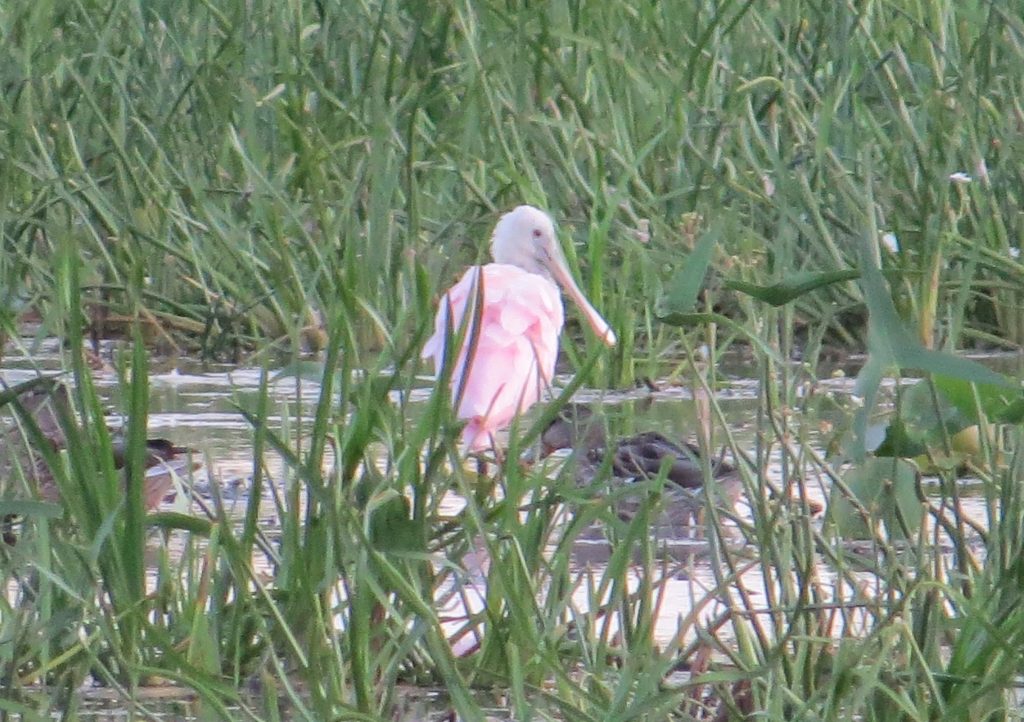
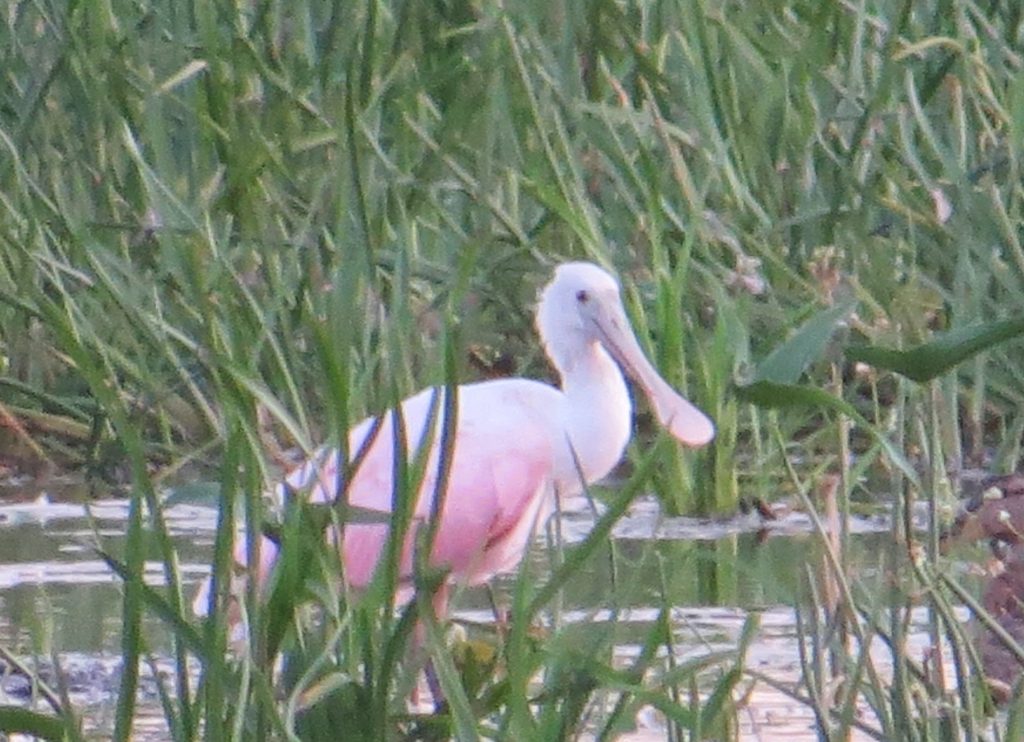
Despite everyone thinking the Spoonbill would stick, it left not long after Melissa and I saw it that evening, never to be seen again. Unfortunately, many Minnesota birders did not see it.
Tufted Duck–December 26, 2018
Speaking of state first records, 2018 began with one when a Tufted Duck showed up near Red Wing in January. Brad Nelson and I chased that bird but were not successful. When a state first record disappears, there is little optimism that there will be another chance. Except this time, there was! The only problem was that Kim Eckert’s second state record discovery in Duluth occurred just a couple weeks before Christmas. How in the world do you break free at that time of year? The short answer for me is that I couldn’t. Thankfully the bird hung on, and I was able to nab it en route to visiting Melissa’s family up north. Getting a lifer this good, this conveniently, and this quickly felt like cheating. It wasn’t the striking male that was found in Red Wing, but you can’t really complain when you get a do-over like this.
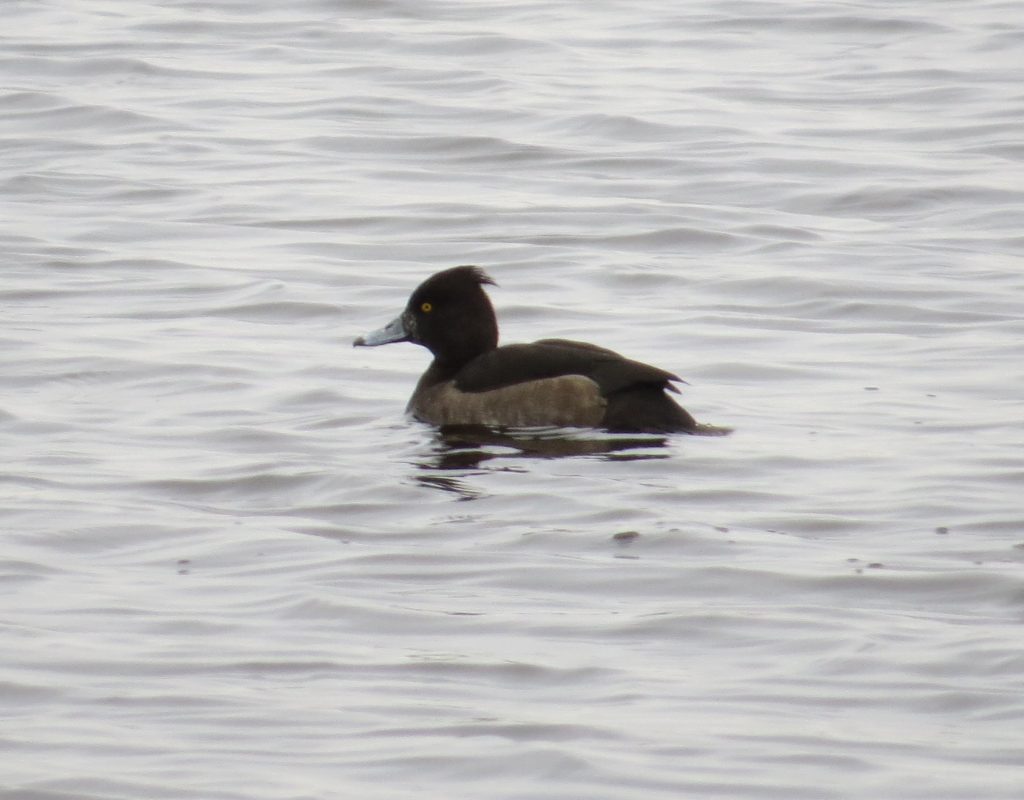
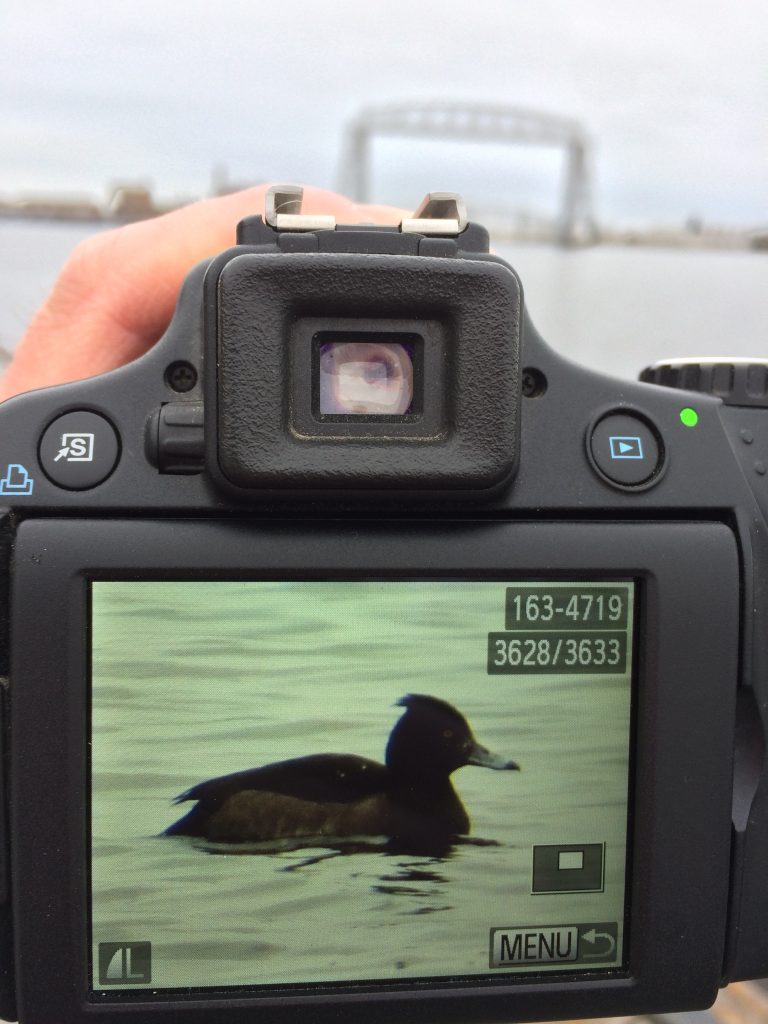
Duluth, the city that just keeps on giving….
A funny note is that a third state record Tufted Duck, a male, showed up this past spring just an hour from my house. However, I had no camera at the time and was stuck at work anyway.
King Eider–January 5, 2019
We had barely been back home from being up north when another incredible duck was found in Duluth, creating an intense urge to return. Duluth power-birding couple, the Kraemers, discovered a juvenile male King Eider off Lake Superior’s Brighton Beach. King Eider is casual in Minnesota, so this was indeed a rare event. The last one I recall occurred back in 2013 when I was just getting into birding. So Steve Gardner, Scott Gardner, Joel Schmidt, and I carpooled for the up-and-down chase to Duluth. When we arrived we didn’t find it, so we headed back to Duluth to look for the Tufted Duck which was still around. Joel had dipped on this bird on a previous chase while the rest of us had seen it. Thankfully it was cooperative for Joel this time. For the rest of us, it was a pretty sweet year bird for the fresh new year. During this side trip of ours, Doug Kieser had refound the King Eider and gave directions on where to spot the very distant duck. So during our second time at Brighton, we were able to get diagnostic scope views but no photos. Even still, it was a key lifer that pretty much has given me the rare duck-sweep for MN with the exception of Garganey.
Brambling–January 31, 2019
Minnesota experienced one of the coldest winters I can recall, but the birding scene just kept getting hotter when Beau Shroyer announced that he had a Brambling visiting his feeders in rural Becker County. This was about a 3-hour drive for me one way, but it may as well have been across the country because Minnesota was going through the infamous Polar Vortex at the time. With windchills in the -50s, most schools were cancelled for multiple days due to cold. Sure, I had three unplanned days off which would be perfect for a chase, except for, you know, temps that could literally kill you if your car broke down (which is more likely in extreme cold). So I fretted for days, monitoring Beau’s daily updates as well as updates from birders that were braver than me. I distracted myself by working on other life list activities.
And perfecting them.
Finally, I couldn’t take it anymore, the cabin fever had set in. On my third day off from work, I made a run for it with local birding friend Jeff Weitzel. Thankfully we had a safe trip, even if it was just a little chilly while we waited for the bird.
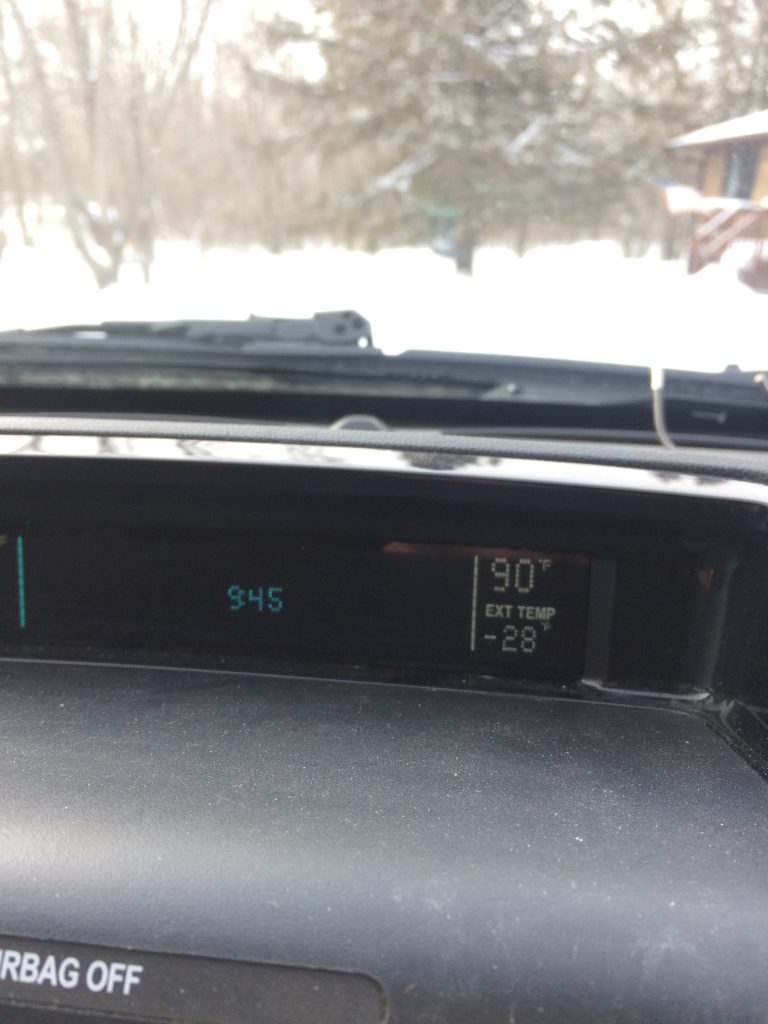
Finally, we saw it. I couldn’t believe we were looking at a Brambling. This is honestly a bird I never thought I’d add to my life list. A Hoary Redpoll was a nice little bonus, along with the more common, but uncommon to me, Purple Finches.
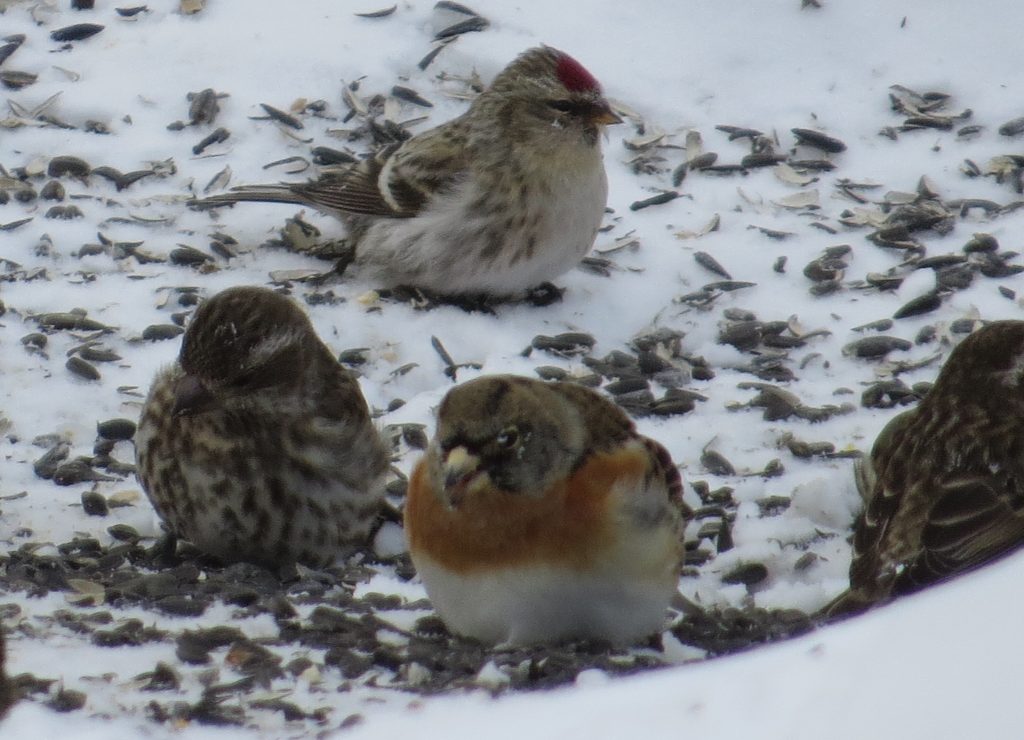
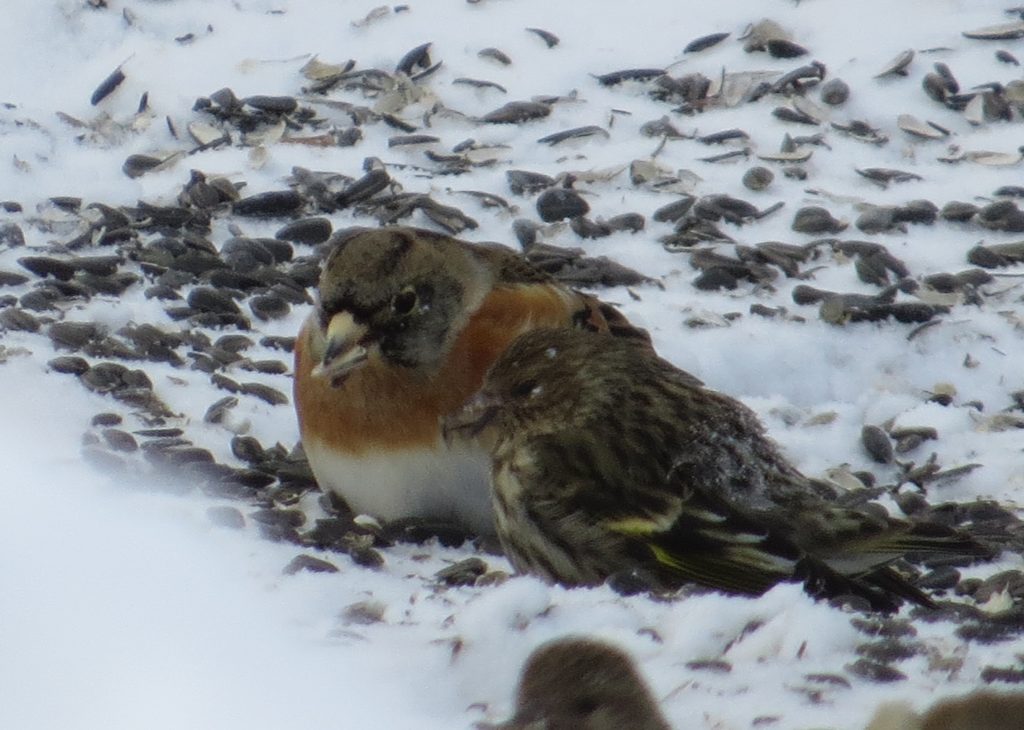
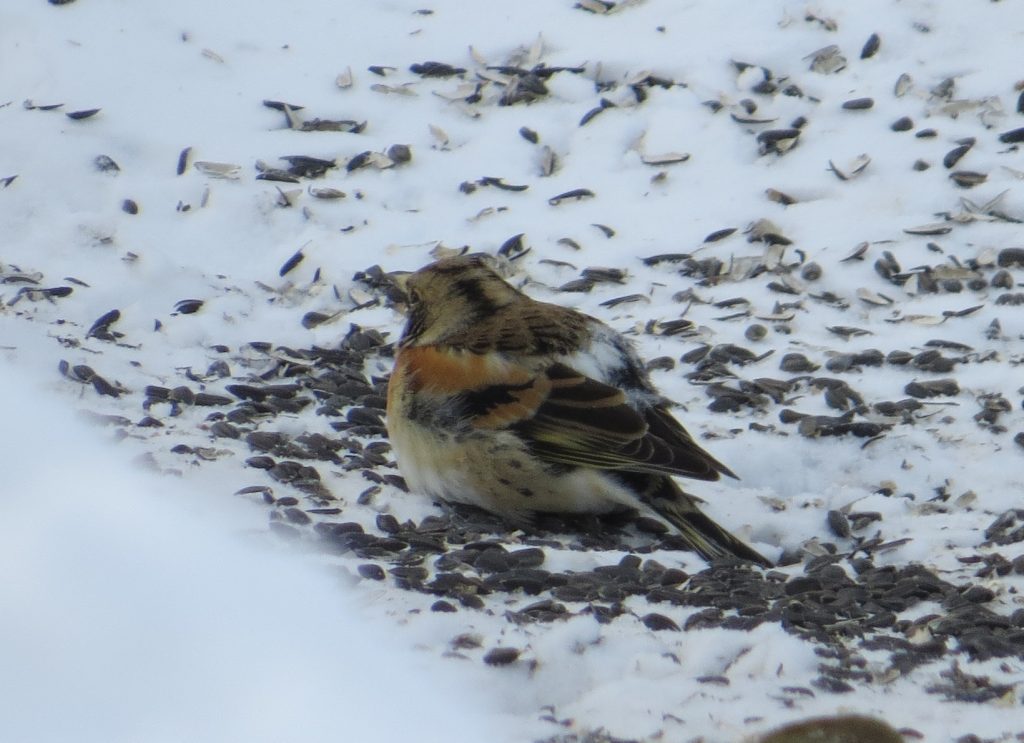 Beau was perhaps the most gracious stakeout host I’ve met. He generously shared this bird with other birders for days even though it meant his family had near constant vehicles right outside their living room. But with a yard scene this cool, it’s too good to keep to oneself.
Beau was perhaps the most gracious stakeout host I’ve met. He generously shared this bird with other birders for days even though it meant his family had near constant vehicles right outside their living room. But with a yard scene this cool, it’s too good to keep to oneself.
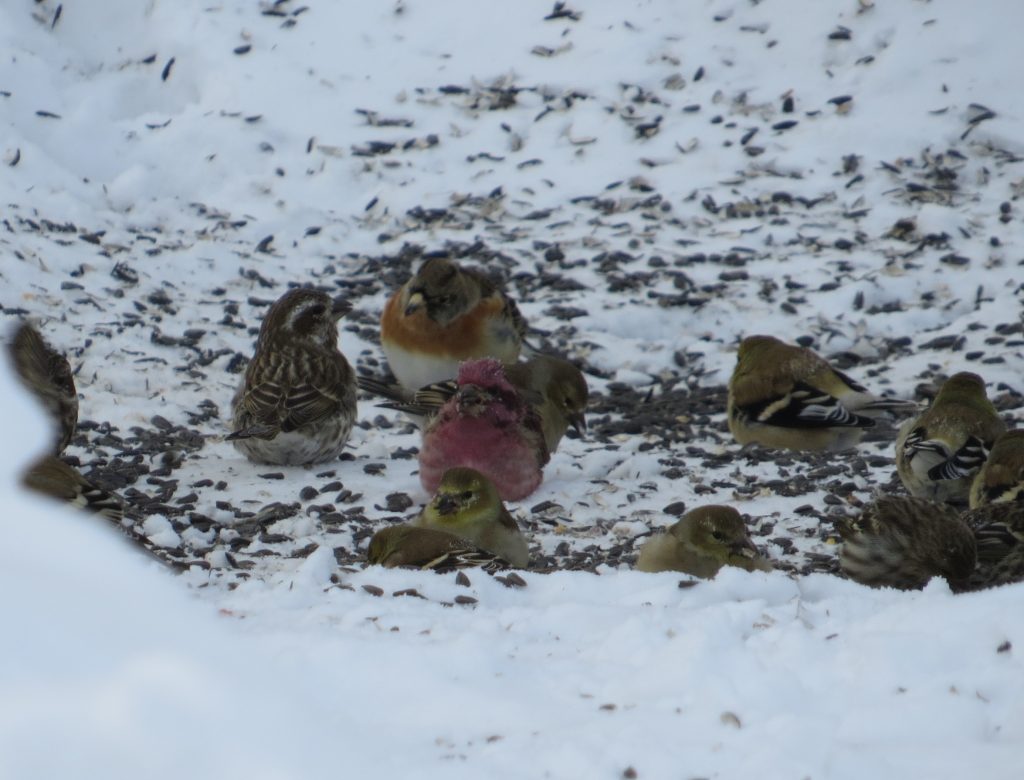
Yellow Rail–May 30,2019
The lowest hanging fruit on my life list in Minnesota is the Yellow Rail which breeds in the state. The most reliable place to tic this bird is the McGregor Marsh which is 3 hours away and in the middle of nowhere. Furthermore, this bird usually vocalizes very late at night (like close to midnight), which makes an up-and-down trip or an en route trip pretty much impossible for me. I knew it would have to be a dedicated trip someday with a hotel stay. Doing a night mission like this by myself far from home is less than ideal. It’s definitely a buddy situation. Problem is that most of my birder buddies already had this bird and wouldn’t be interested in this kind of field trip. But then inspiration hit when I asked Ben Douglas if he had the bird. Ben is doing an epic big year trying to get 10,000 county tics in 2019. Certainly an Aitkin County Yellow Rail would work for 0.01% of his goal. Plus, it turns out that Ben also needed the Yellow Rail as a lifer. So plans were made. We would tackle the McGregor Marsh on busy Hwy. 65 in the dark together and then grab a hotel in town. Ben and I picked the right year to do this. Birders who had been to McGregor Marsh earlier in the spring to look for Yellow Rails had reported incredible numbers–well over 20 birds sounding off. And they were found at several locations. Ben and I were definitely getting excited for our rendezvous with this lifer we have both put off.
On my last teacher day of the year, I drove up to Mora after work to meet Ben. After a nice chat and a little lunch, we killed daylight by bumming around Kanabec County boosting our respective Kanabec lists by a few dozen tics before finally heading north to the McGregor Marsh. I can’t imagine the work and mental strain Ben’s goal would take. Ben has to squeeze out county tics any way he can. For him, the grind never stops. While I followed his car and we were stopped on Hwy. 65 for some road construction, I was enjoying the AC and radio with the windows up when I get a text from Ben in front of me: an Aitkin County Pine Warbler and Golden-winged Warbler were having a duet right by the car. Ben had his windows down and his radio off–100% committed to his goal. I was impressed.
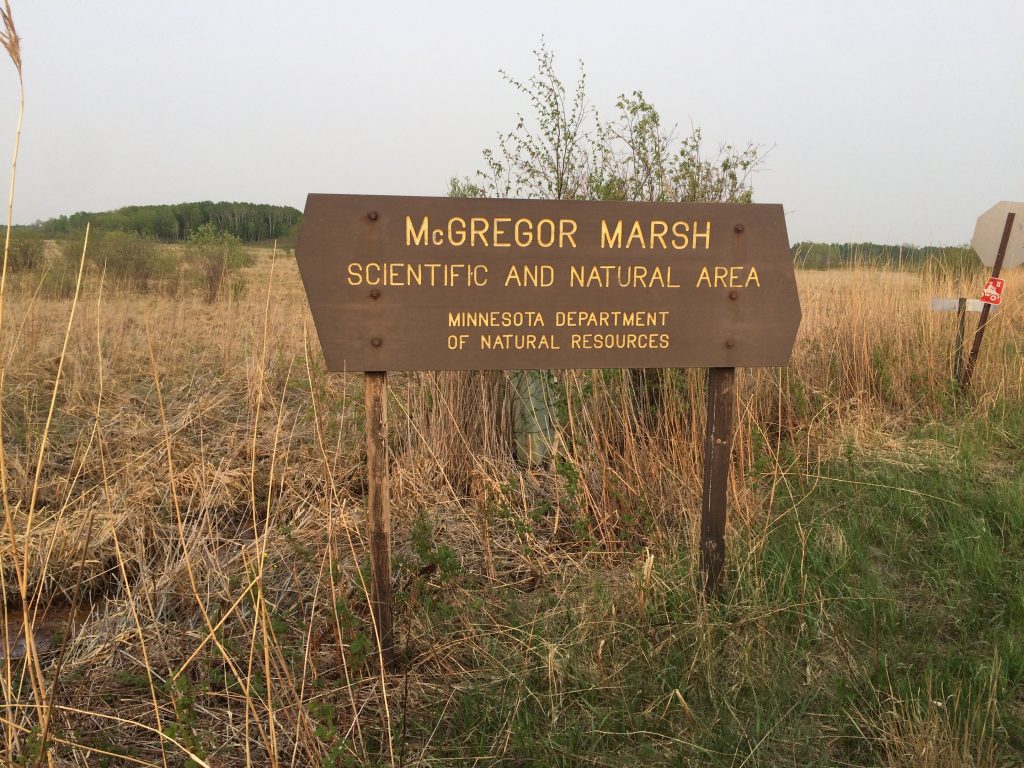
We got to the marsh with a little more than an hour of daylight left. We poked around on the Soo Line trail, a wide gravel railroad bed, that borders the south end of the marsh. Ben has superhuman hearing and was calling out birds far away. His ability to detect Ruffed Grouse drumming is uncanny, a gift really, and one I hope he will someday use in Kandiyohi County. At 7:45, well before dark, it was Ben who excitedly called out the tick-tick-ticking of our Yellow Rail lifer. Within minutes we had several calling around us. We tried for visuals for awhile before going to another nearby location. Once again, we heard the ticking of the Yellow Rails, but we just could not get a visual. Ben may have seen one briefly but did not get a solid look. It was okay, though, as this is what is to be expected with this species. Talking it over, we realized we got we came for and each had time to get home before midnight. No hotel was necessary for this trip. After saying our goodbyes and congratulating each other, we split ways. It was a good box to check on our life lists, made even more fun by sharing it with someone else. And for those of you that are curious, at the writing of this post Ben is at 86% of his goal with half the year left.
Prairie Warbler–June 3, 2019
I have wanted to see a Prairie Warbler for a very long time. Warblers are what got me into birding, and I have seen an awful lot of them since those first days. Because my travels haven’t yet brought me to the southeastern U.S., I still had not tallied this striking bird. It is casual in Minnesota, which means it shows maybe once every five years or so. There hasn’t really been a chaseable one since I’ve been a birder. Steve Gardner and I talked of heading to the very southeastern corner of Iowa this summer where they are known to show up annually. Before we could make plans for that 7.5 hour drive, though, Dedrick Benz made a sweet discovery. Dedrick found a Prairie Warbler on territory in the very southeastern corner of Minnesota in Houston County. The prospect of cutting off 3 hours of drive time and getting this life bird in Minnesota were very enticing. Even though this bird was singing on territory, I was anxious to get down there before my trip to California a week later. Steve decided to join me and took a day of vacation for this Monday jaunt.
Finding the Warbler was not hard.
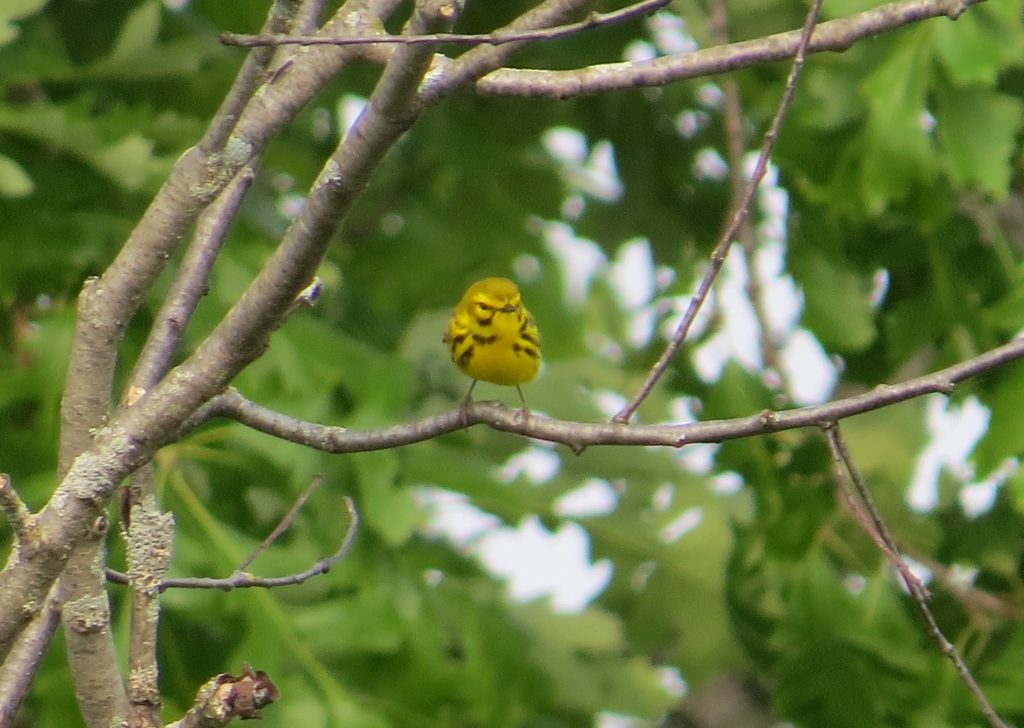 Birds that are long-hoped for seem more enjoyable than the random surprise birds. This one was a treat for the eyes and ears.
Birds that are long-hoped for seem more enjoyable than the random surprise birds. This one was a treat for the eyes and ears.
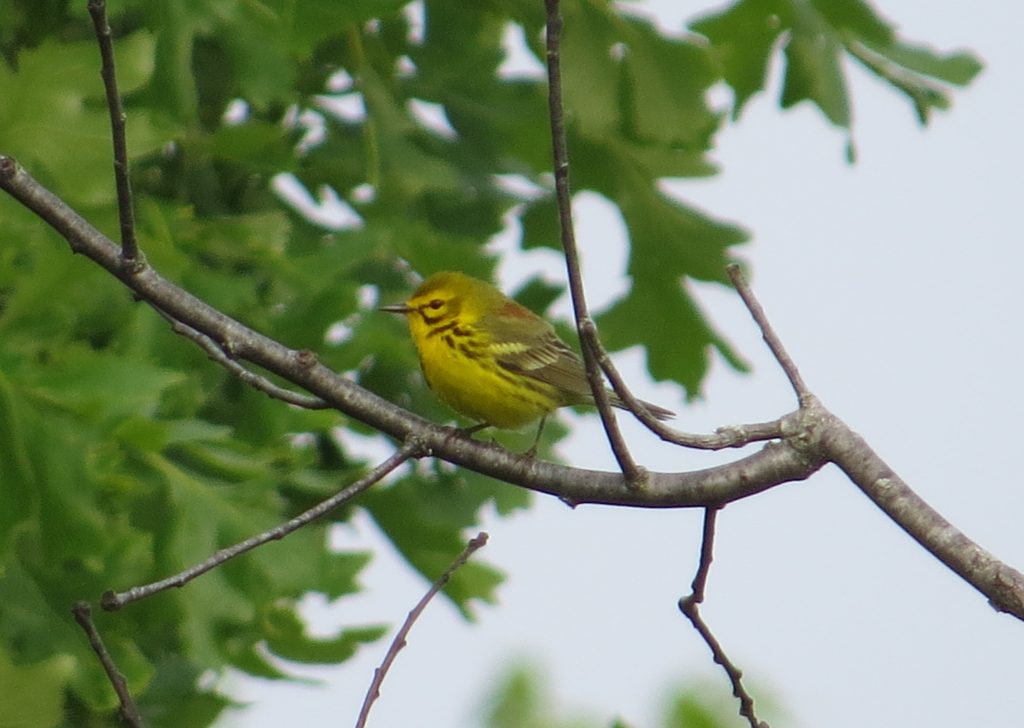
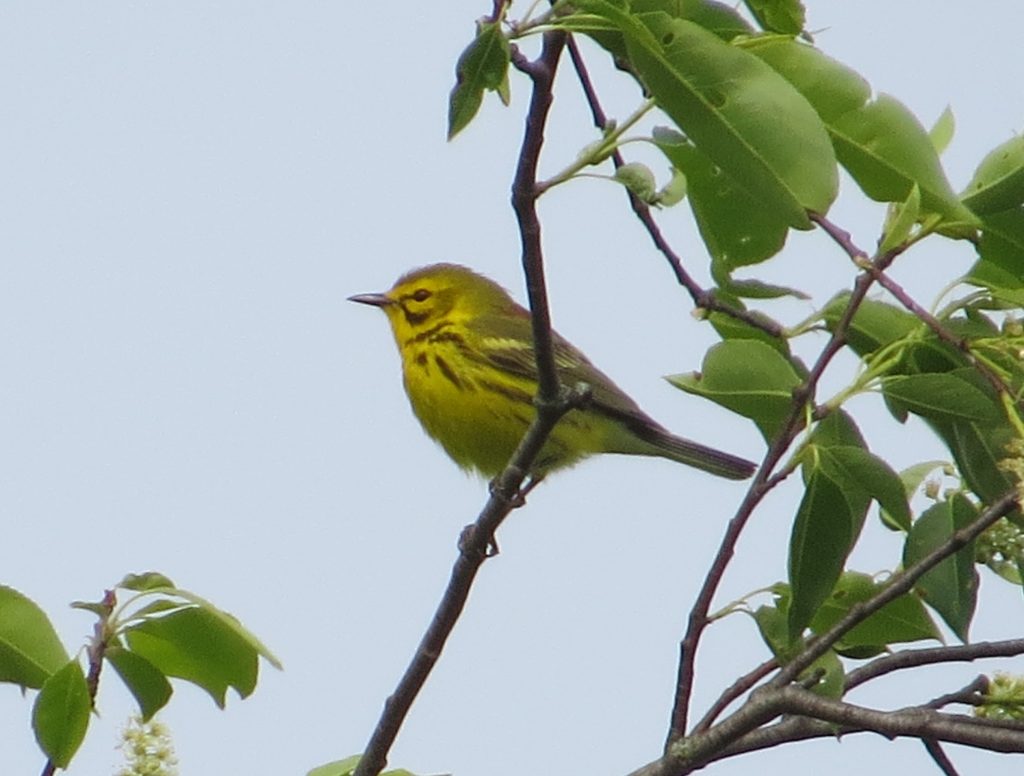 This bird was definitely the prize, but we also enjoyed numerous Henslow’s Sparrows and a Black-billed Cuckoo in the same area. We also made a stop a mile away for a White-eyed Vireo, also a casual species, found by Josh Watson in true Patagonia Picnic Table fashion. We got terrible looks at this bird before it disappeared. So it still remains as one of those birds I would like to see well since my other observation was a similar experience several years ago at Flandreau State Park in New Ulm. For Steve it was a state bird. Speaking of which, this trip to the southeastern part of the state allowed us to look for some overdue life birds for Steve. In Houston County we followed up on a report of an Acadian Flycatcher which we found no problem for Steve’s life list. A Cerulean Warbler singing nearby was a nice bonus.
This bird was definitely the prize, but we also enjoyed numerous Henslow’s Sparrows and a Black-billed Cuckoo in the same area. We also made a stop a mile away for a White-eyed Vireo, also a casual species, found by Josh Watson in true Patagonia Picnic Table fashion. We got terrible looks at this bird before it disappeared. So it still remains as one of those birds I would like to see well since my other observation was a similar experience several years ago at Flandreau State Park in New Ulm. For Steve it was a state bird. Speaking of which, this trip to the southeastern part of the state allowed us to look for some overdue life birds for Steve. In Houston County we followed up on a report of an Acadian Flycatcher which we found no problem for Steve’s life list. A Cerulean Warbler singing nearby was a nice bonus.
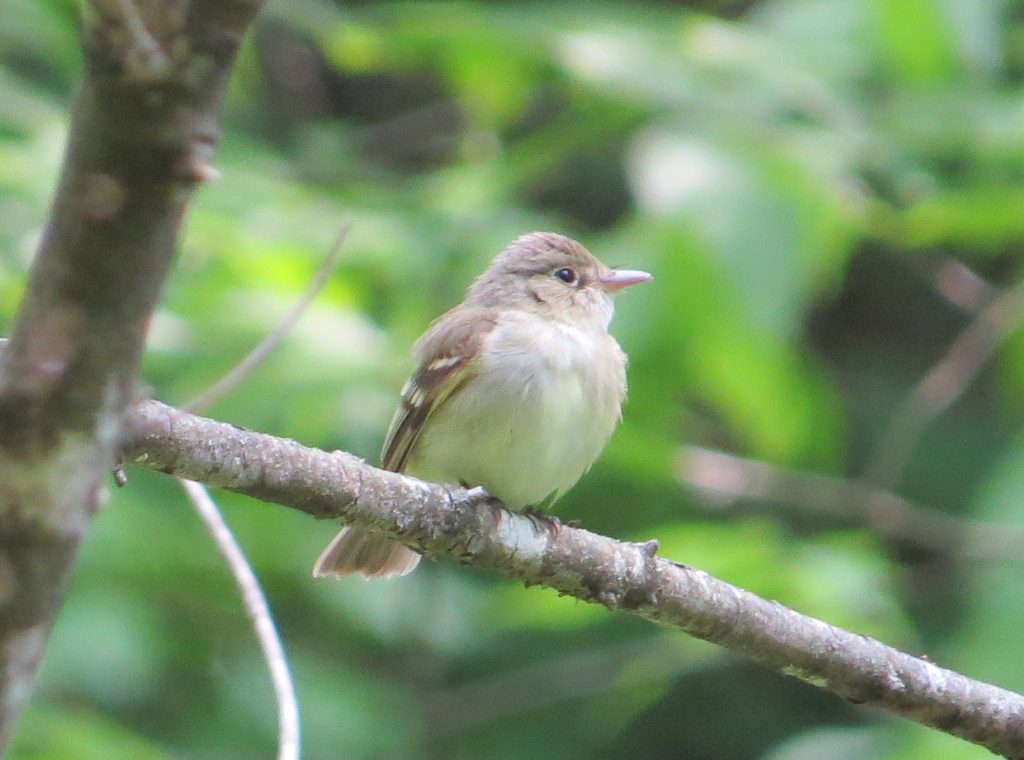 On the way home we stopped at Whitewater State Park and found Steve his lifer Louisiana Waterthrush thanks to some tips from John Hockema and some guiding from Malcolm Gold six years ago.
On the way home we stopped at Whitewater State Park and found Steve his lifer Louisiana Waterthrush thanks to some tips from John Hockema and some guiding from Malcolm Gold six years ago.
It was an incredible year for life birds right here in the home state. With my life list past the 500 mark, getting a life bird here is becoming more rare each year. Hopefully I can pull out another one or two in the coming school year.

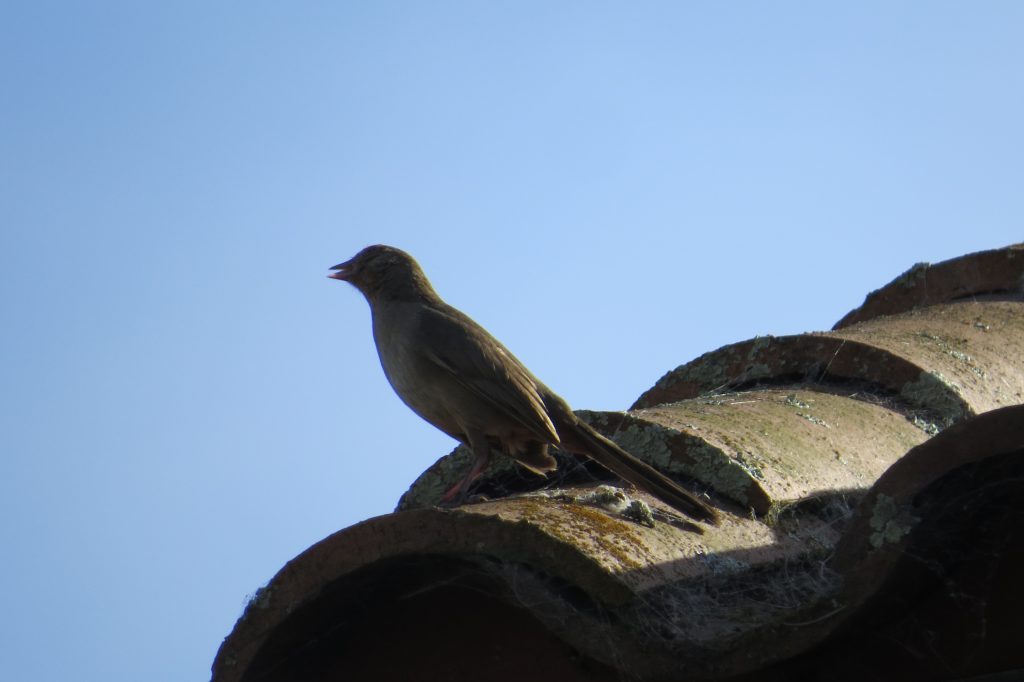
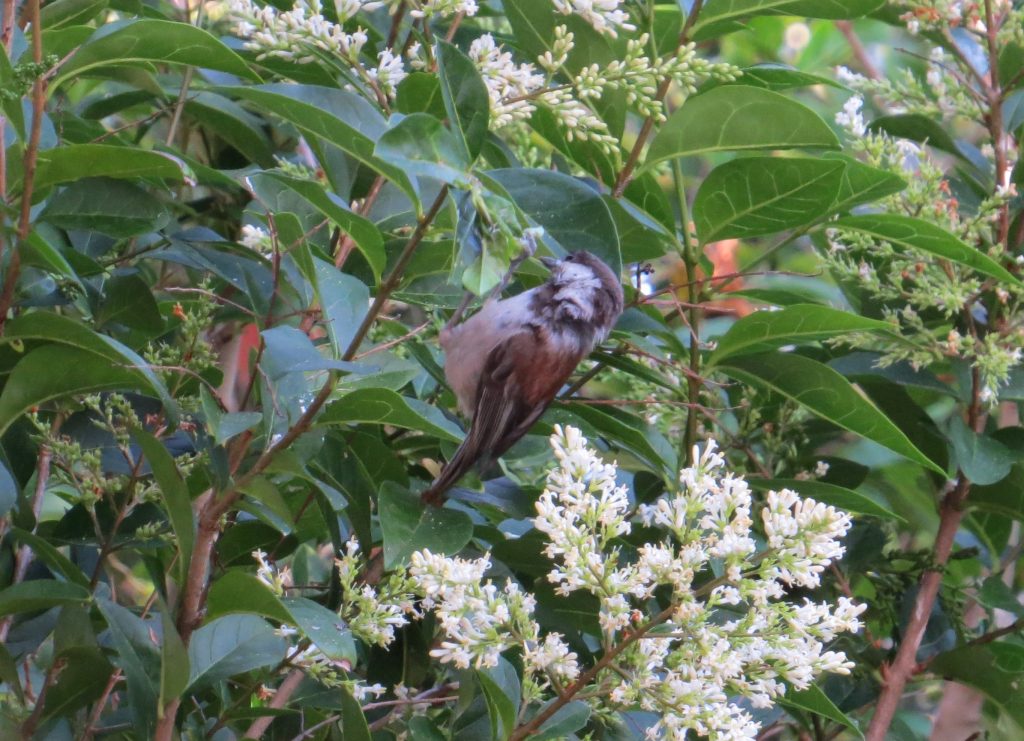
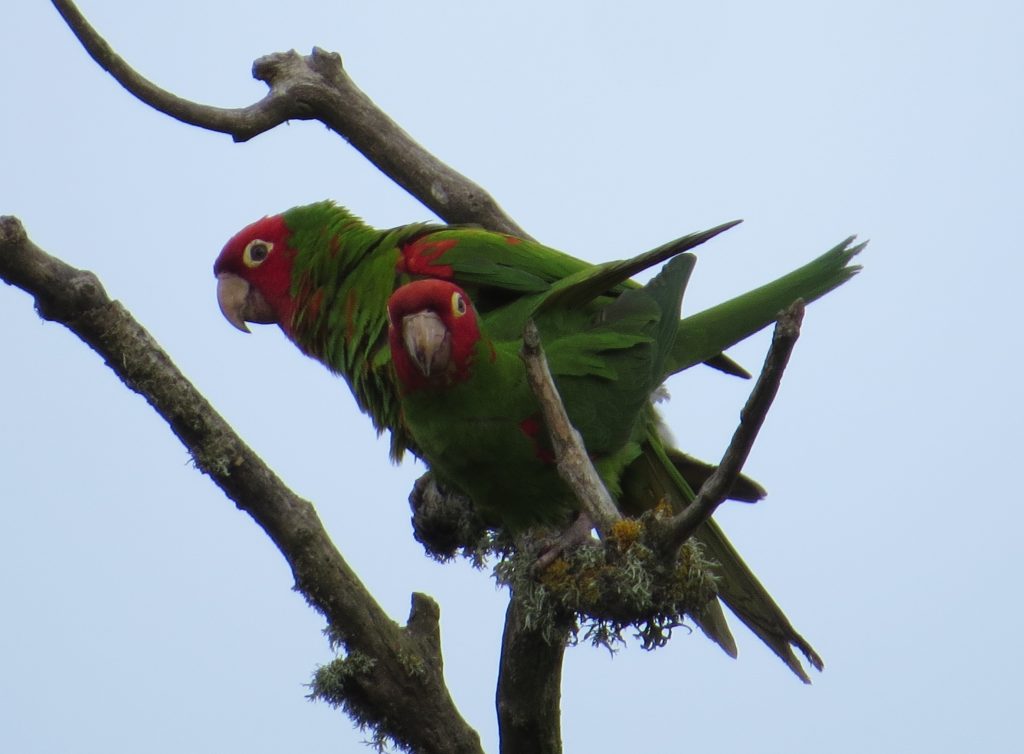
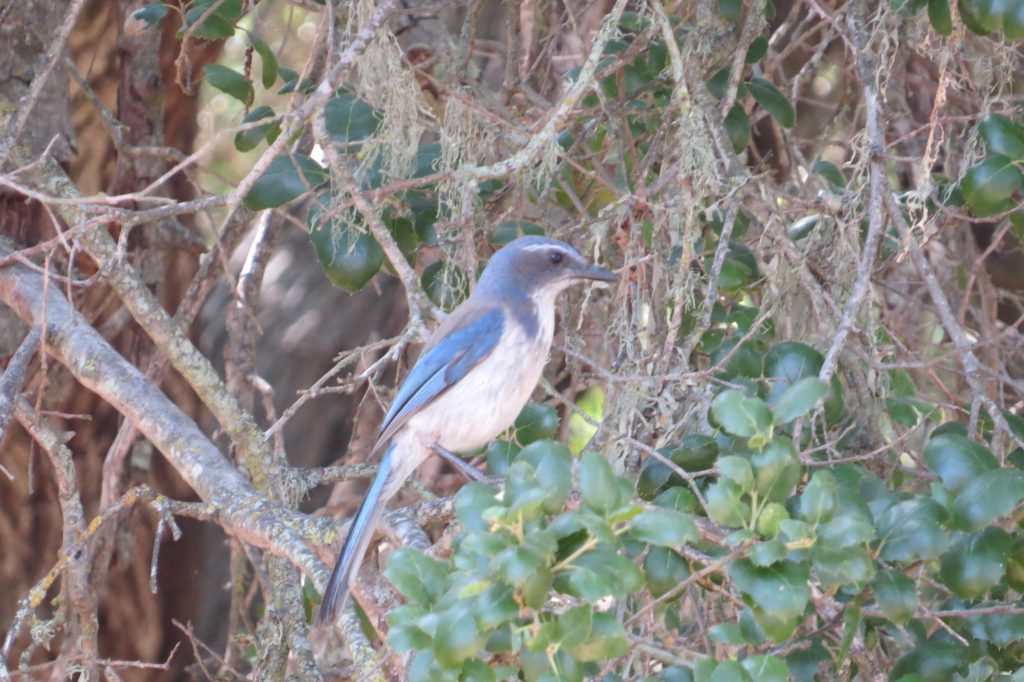
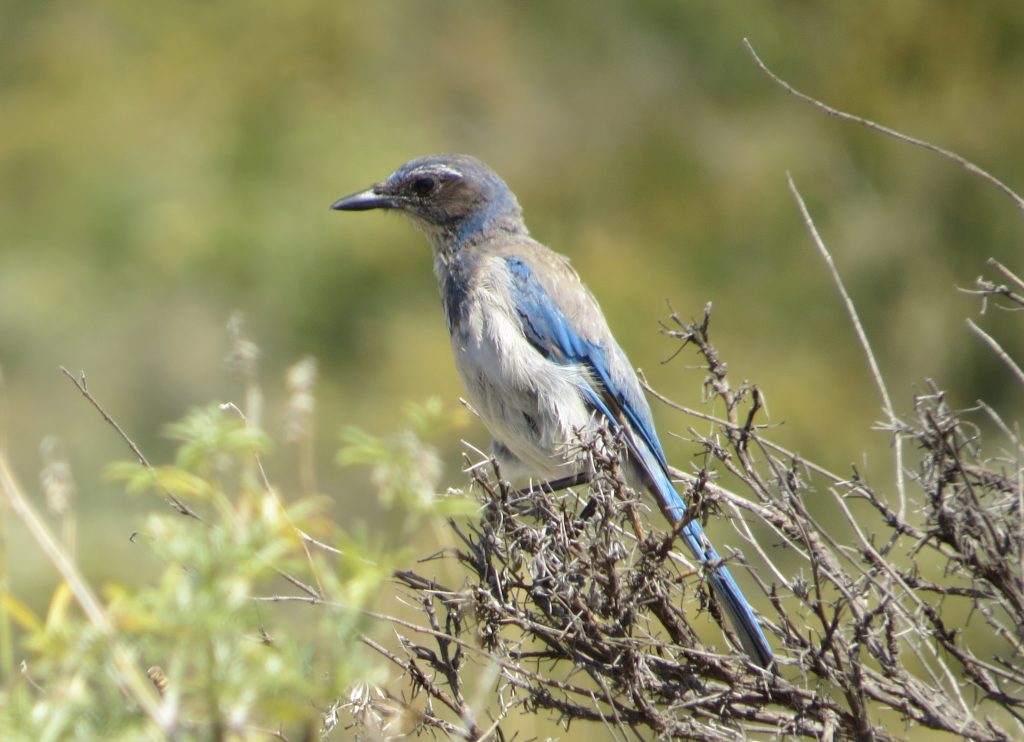
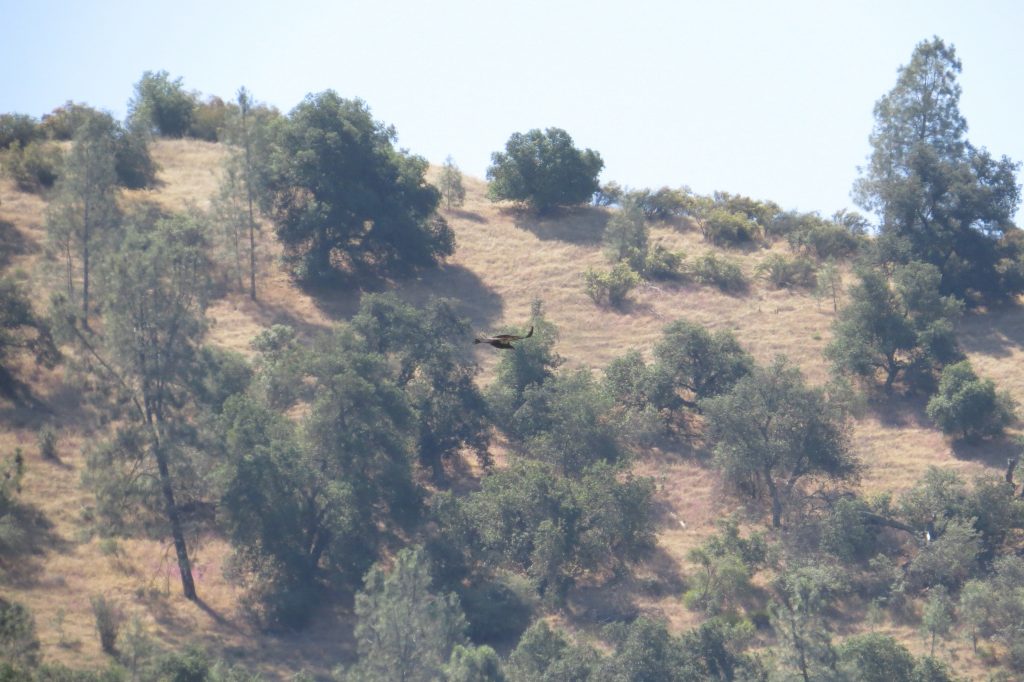
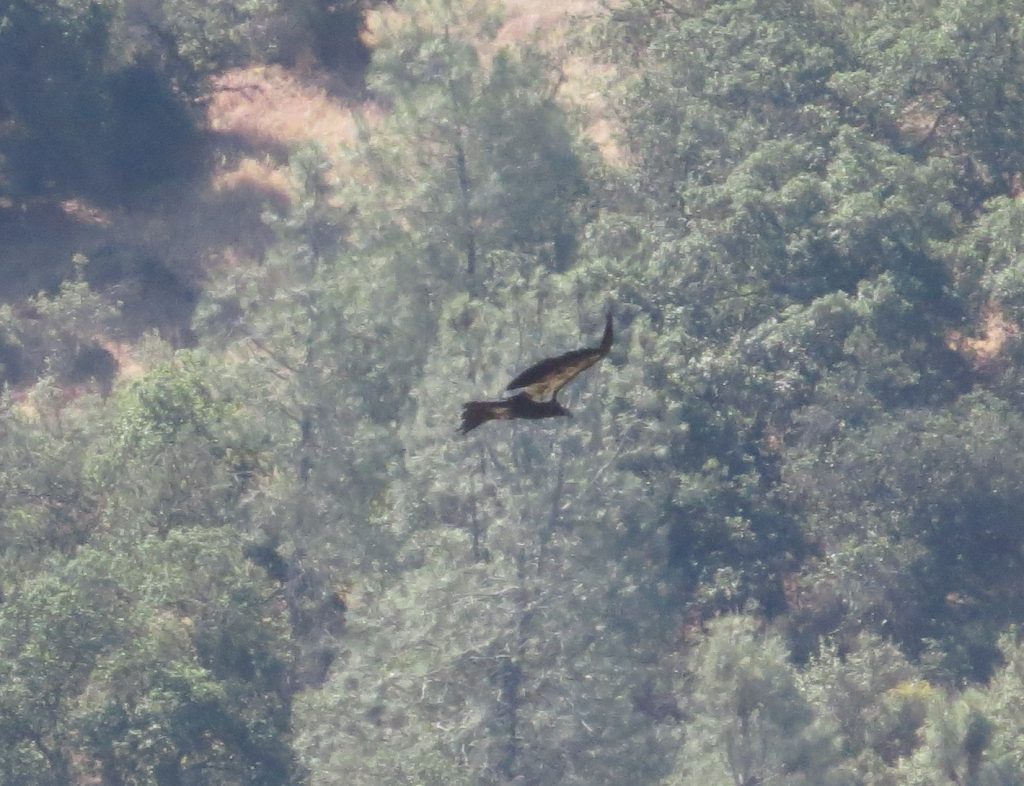
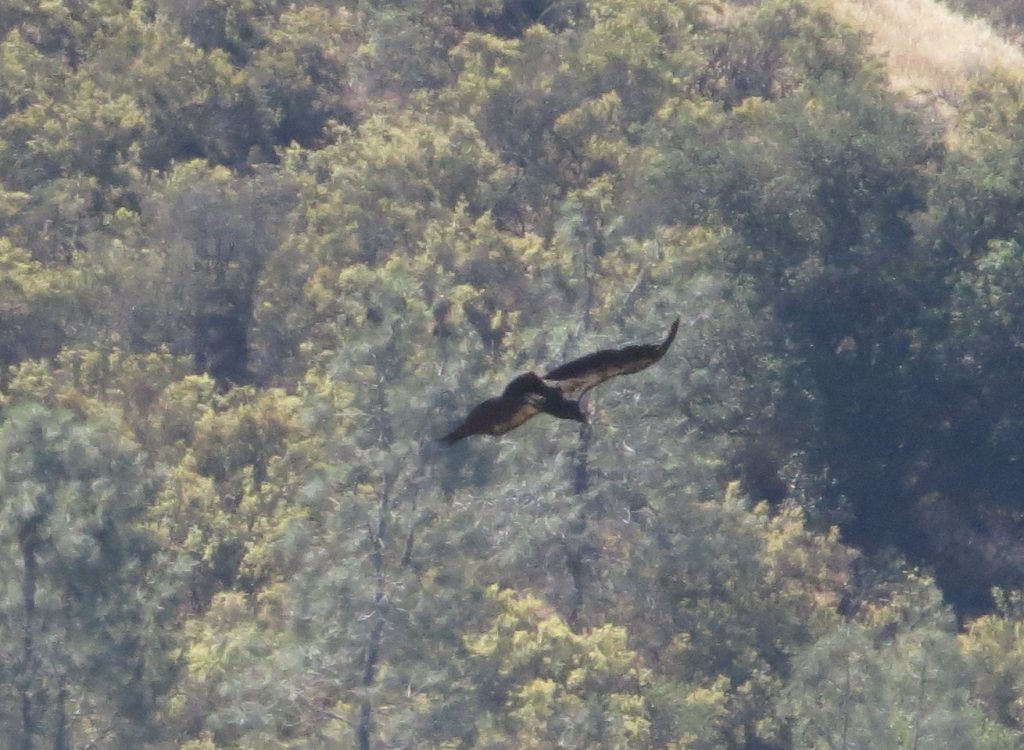 This bird was quite distant from me, but with an 8-foot wingspan, it still looked huge. The bird perched on a hillside on the opposite side of the valley, very near the campground. Even though I couldn’t see fine detail, this behemoth stood out like a sore thumb.
This bird was quite distant from me, but with an 8-foot wingspan, it still looked huge. The bird perched on a hillside on the opposite side of the valley, very near the campground. Even though I couldn’t see fine detail, this behemoth stood out like a sore thumb.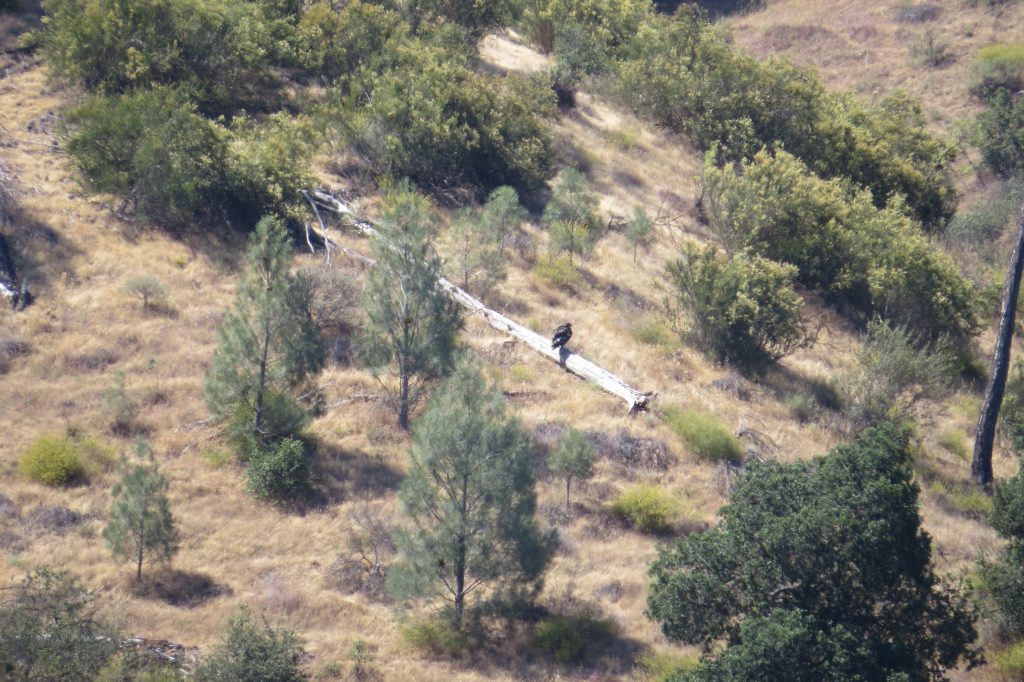
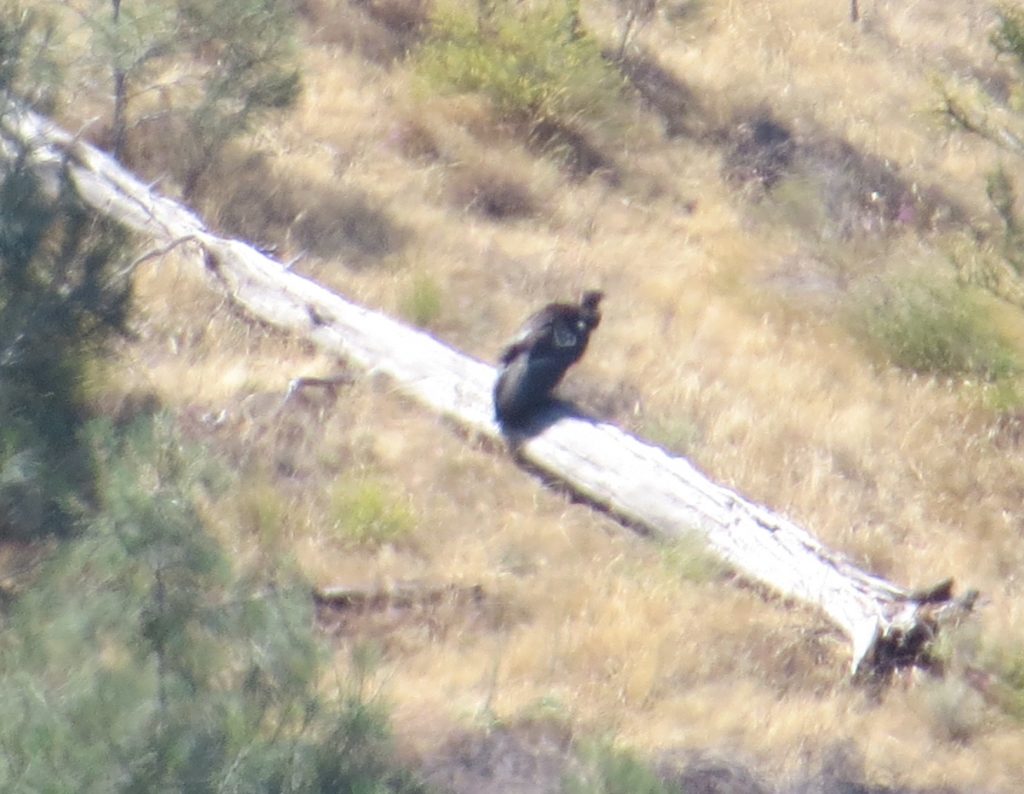 I had dipped on this bird at the Grand Canyon two years ago. All is well, because actually getting this lifer in California seemed more fitting. I would have liked better looks, but I wasn’t complaining. On the contrary, I was relieved that I didn’t have to do the longer, hotter hike with the family to get this bird.
I had dipped on this bird at the Grand Canyon two years ago. All is well, because actually getting this lifer in California seemed more fitting. I would have liked better looks, but I wasn’t complaining. On the contrary, I was relieved that I didn’t have to do the longer, hotter hike with the family to get this bird.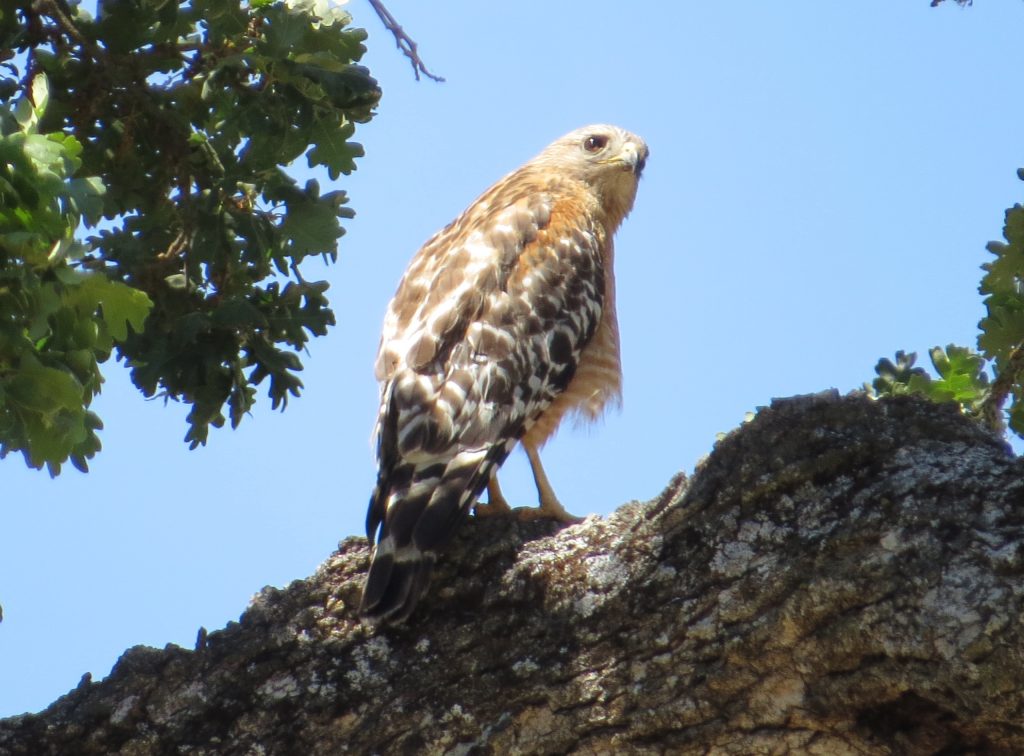
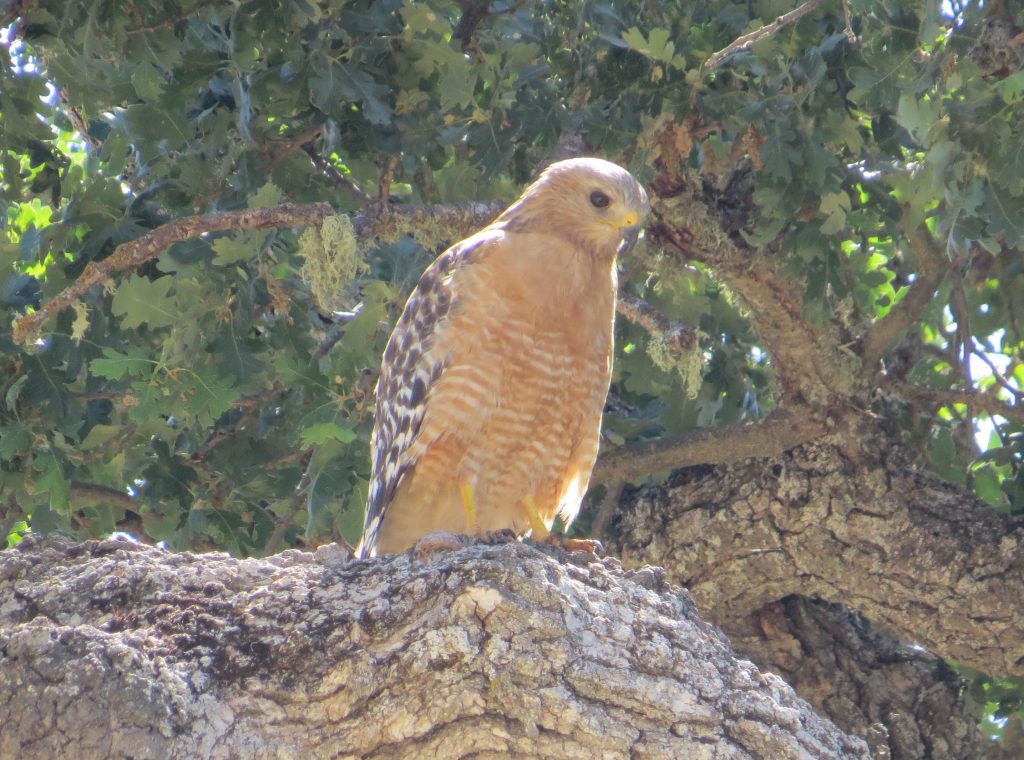
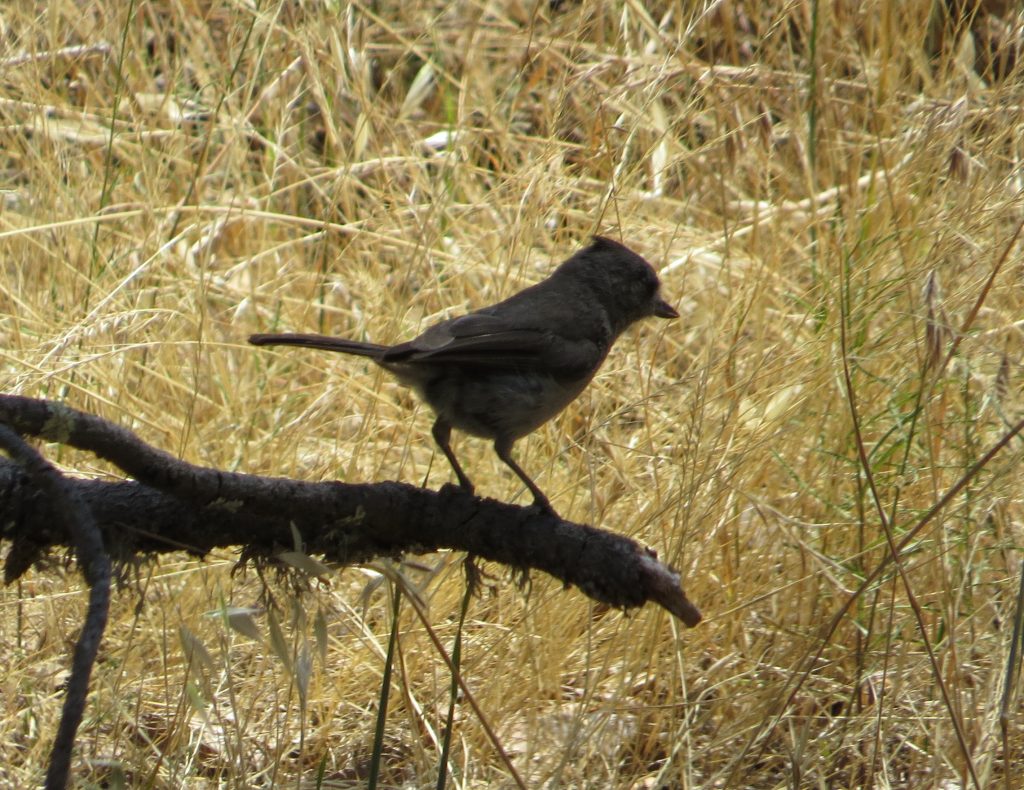
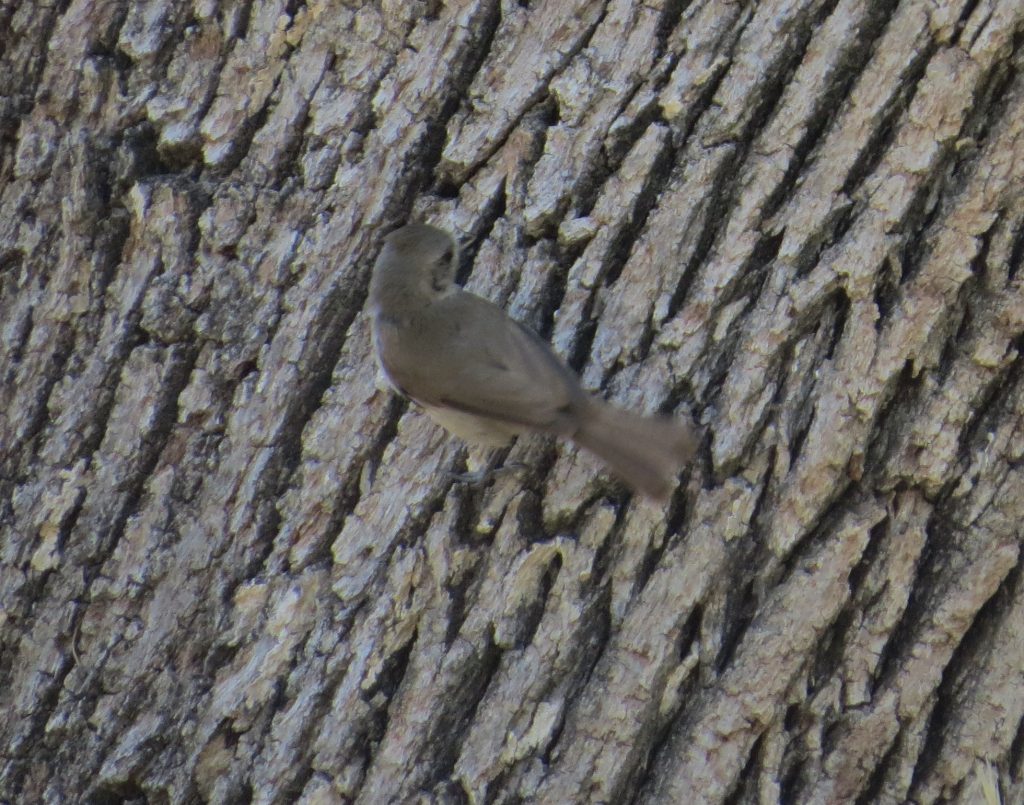 On the way out of the park, I wanted to make one more pass down that gravel road by the visitor center to look for the California Quail. Even though this bird looks extremely similar to the very common Gambel’s Quail I see in Arizona, this was still one of the species I was wanting to see the most on this trip. Unfortunately I was looking at a bad time of day for birds–close to noon. But as I walked along, I heard a cooing sound that I knew had to be the Quail. Somehow I got lucky and managed to spot it as it was hunkered down in a dense tree by the small stream of this riparian corridor.
On the way out of the park, I wanted to make one more pass down that gravel road by the visitor center to look for the California Quail. Even though this bird looks extremely similar to the very common Gambel’s Quail I see in Arizona, this was still one of the species I was wanting to see the most on this trip. Unfortunately I was looking at a bad time of day for birds–close to noon. But as I walked along, I heard a cooing sound that I knew had to be the Quail. Somehow I got lucky and managed to spot it as it was hunkered down in a dense tree by the small stream of this riparian corridor.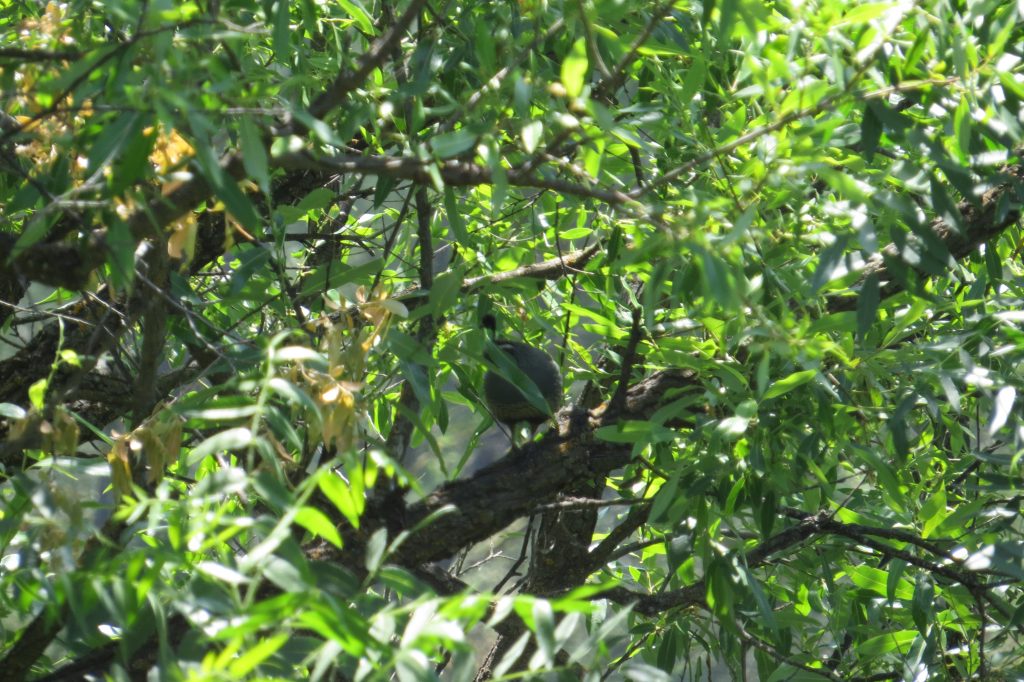
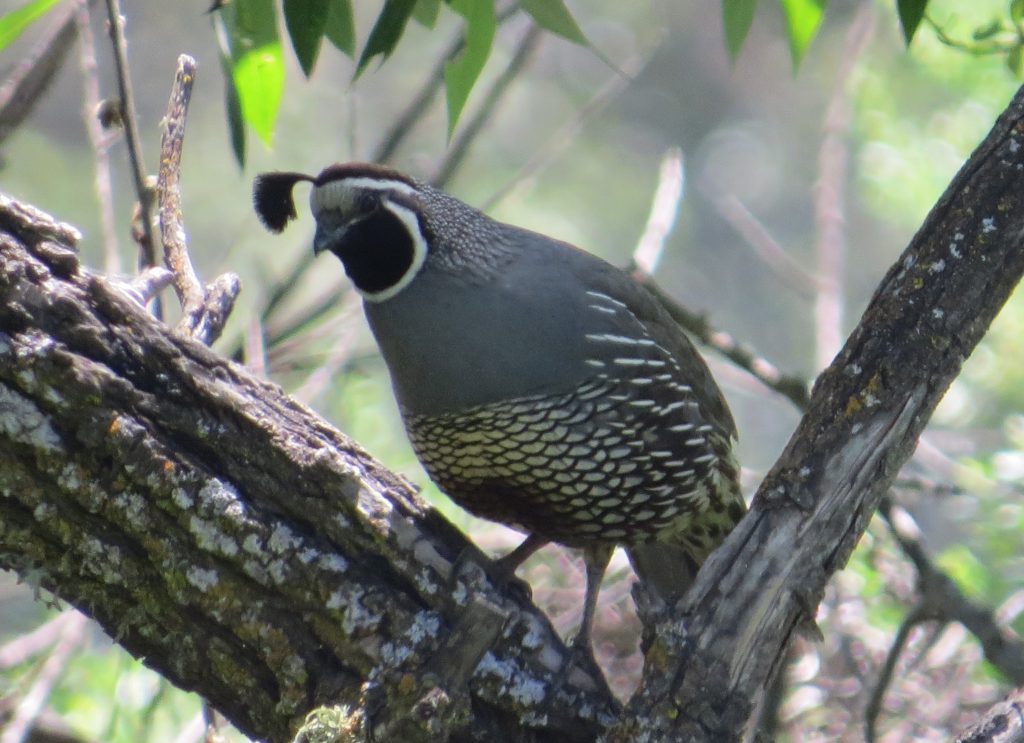
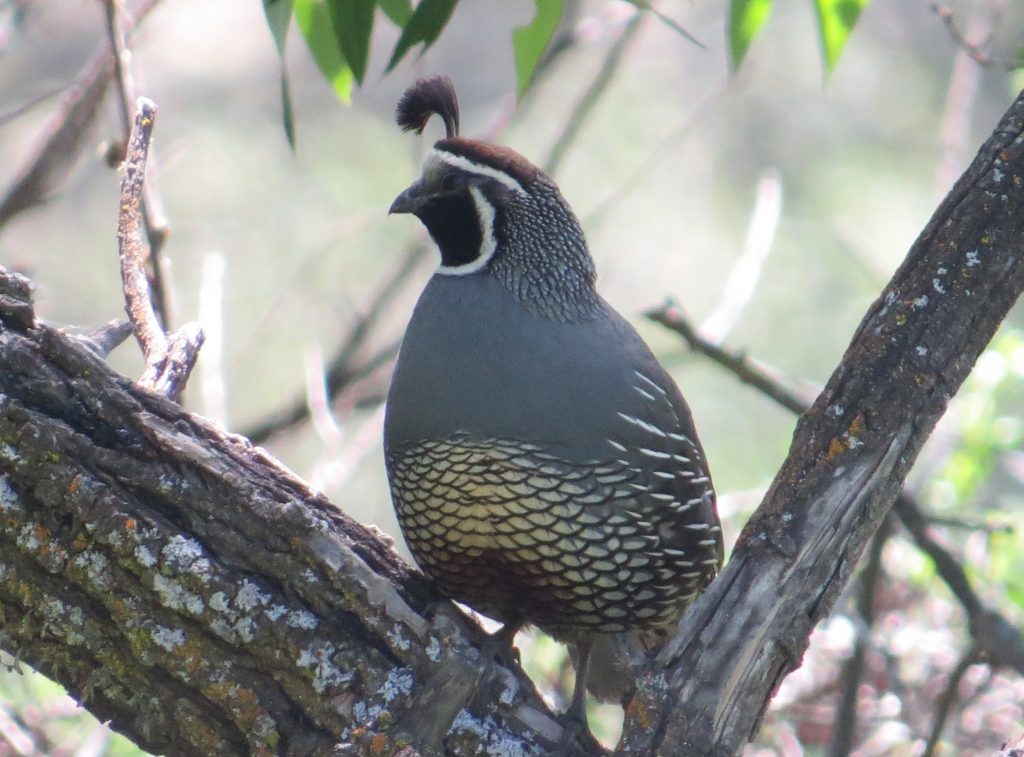 Satisfied, it was time to leave Pinnacles NP even though there were still some lifers left on the table. One of those was the Yellow-billed Magpie, but I knew to be watching for them on Highway 25 as we headed north back to San Francisco. They had been reported all along this road. Sure enough, as we passed by a farm I spotted two Magpies on a fence. I was thrilled. But with no shoulder and a car right behind me, I had to keep going down the road until I could get turned around. I finally got back to the spot about 5 minutes later, but there was no sign of the Magpies. Because they do not overlap with Black-billed Magpies in this area, they were certainly Yellow-billed. Unfortunately I never did get to see those yellow bills. It kind of took some of the air out of this being my 500th life bird. Sightings like this are one of the reasons I don’t get too hung up on what my actual 500th, 400th, etc birds are. Other reasons include heard-only observations of some species and splits/lumps of others. With that said, it was still nice to finally reach this milestone and surpass it on this trip.
Satisfied, it was time to leave Pinnacles NP even though there were still some lifers left on the table. One of those was the Yellow-billed Magpie, but I knew to be watching for them on Highway 25 as we headed north back to San Francisco. They had been reported all along this road. Sure enough, as we passed by a farm I spotted two Magpies on a fence. I was thrilled. But with no shoulder and a car right behind me, I had to keep going down the road until I could get turned around. I finally got back to the spot about 5 minutes later, but there was no sign of the Magpies. Because they do not overlap with Black-billed Magpies in this area, they were certainly Yellow-billed. Unfortunately I never did get to see those yellow bills. It kind of took some of the air out of this being my 500th life bird. Sightings like this are one of the reasons I don’t get too hung up on what my actual 500th, 400th, etc birds are. Other reasons include heard-only observations of some species and splits/lumps of others. With that said, it was still nice to finally reach this milestone and surpass it on this trip.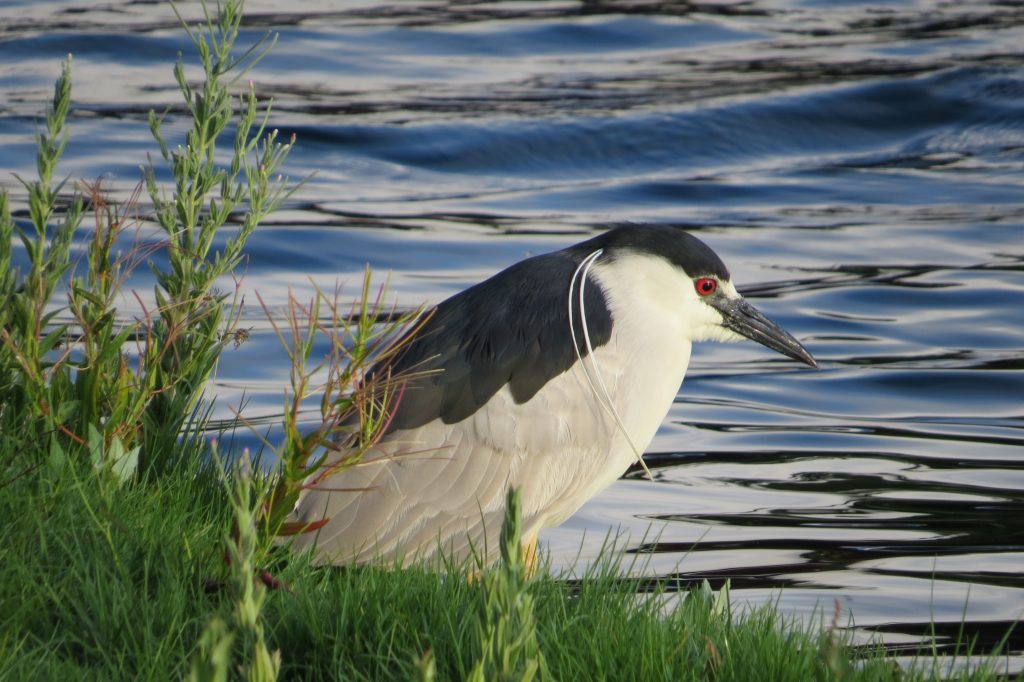 When I first spotted the White-tailed Kites, I had seen two adults, but when I arrived at the tree they were hanging out in, I found one adult and two juveniles. They didn’t move at all, and the juveniles were constantly begging for food with an annoying screaming sound. The worn-out parent just closed its eyes and hunkered down as if it was thinking Please just stop, somebody please just make it stop.
When I first spotted the White-tailed Kites, I had seen two adults, but when I arrived at the tree they were hanging out in, I found one adult and two juveniles. They didn’t move at all, and the juveniles were constantly begging for food with an annoying screaming sound. The worn-out parent just closed its eyes and hunkered down as if it was thinking Please just stop, somebody please just make it stop.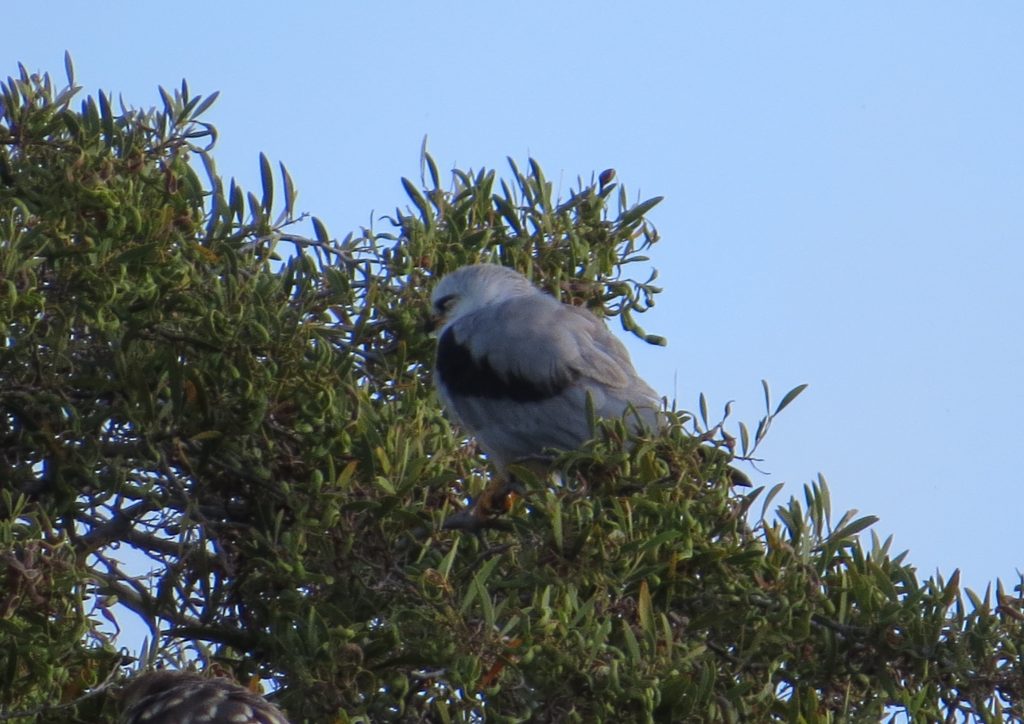
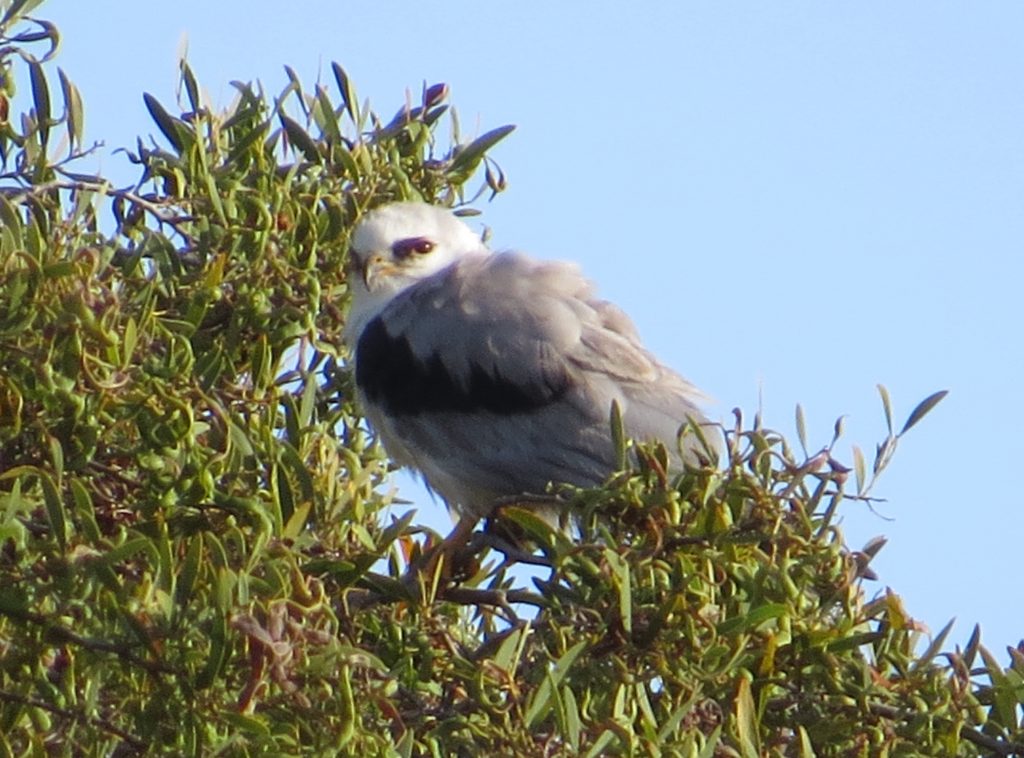
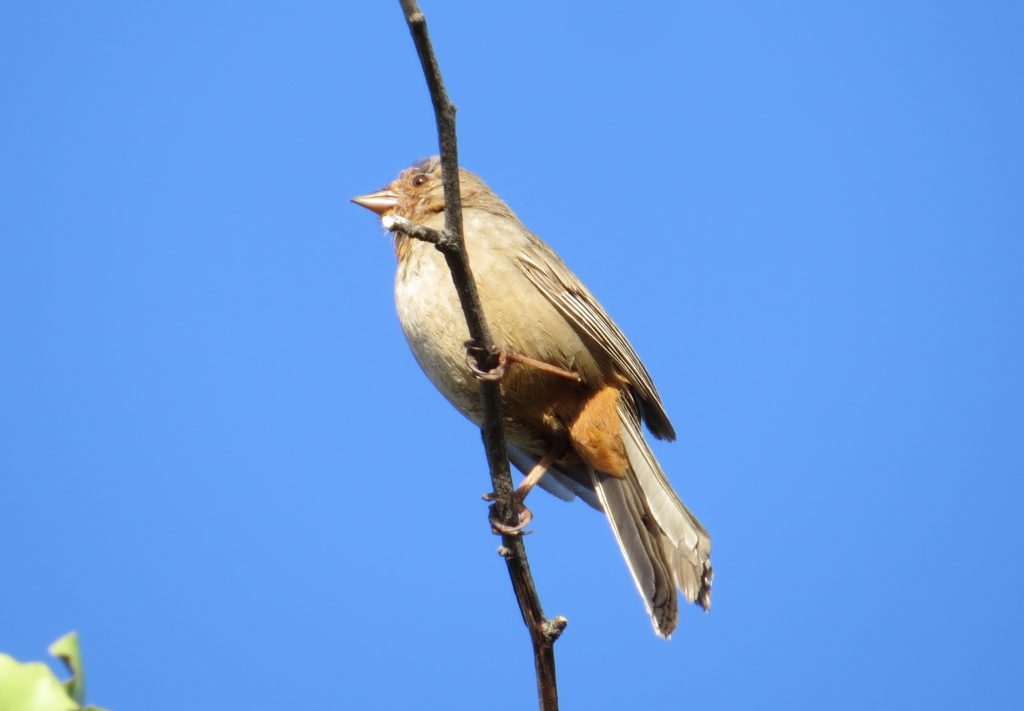
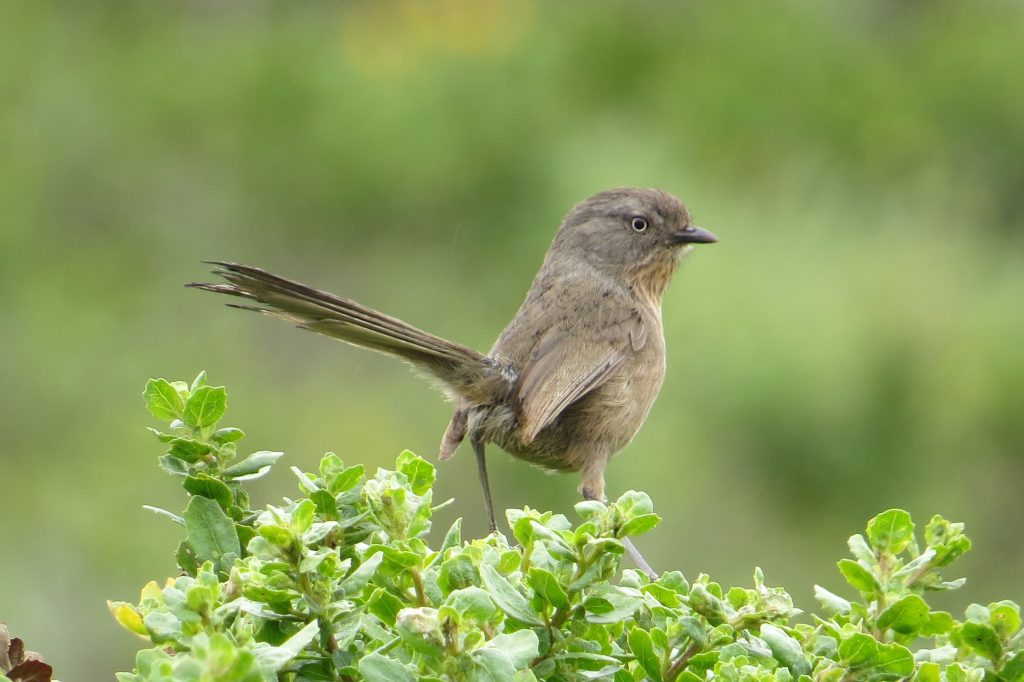
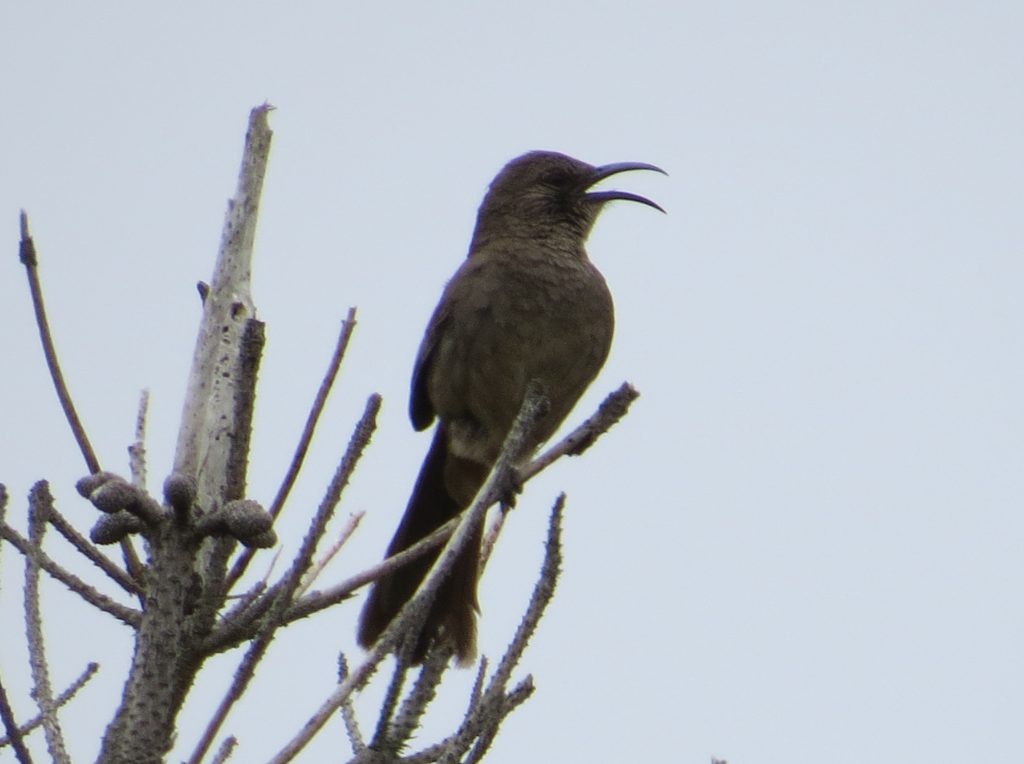
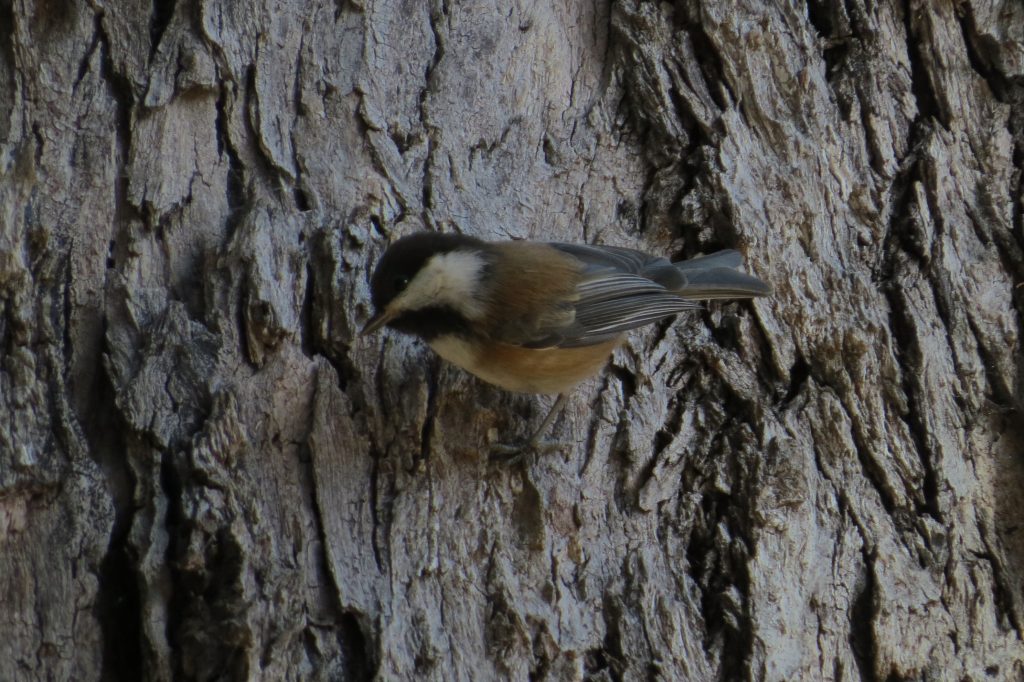
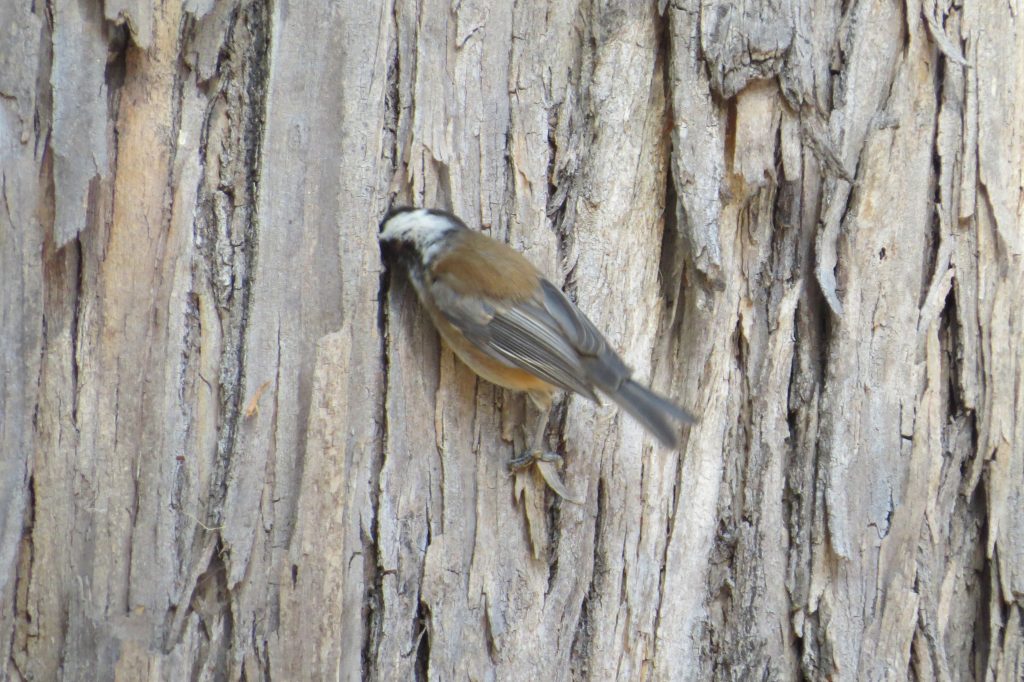
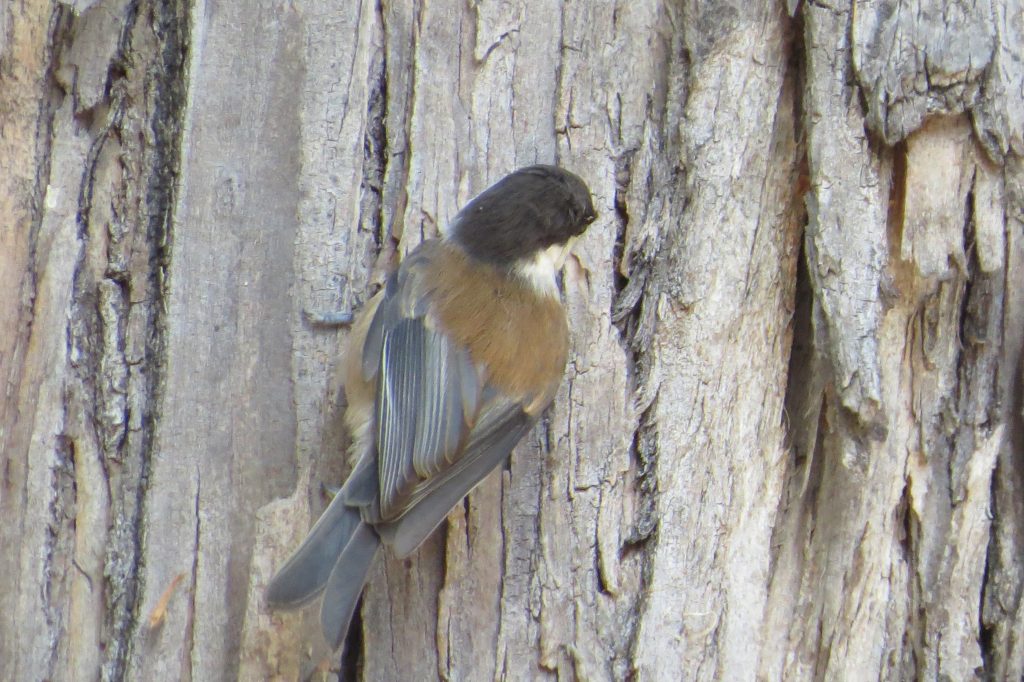
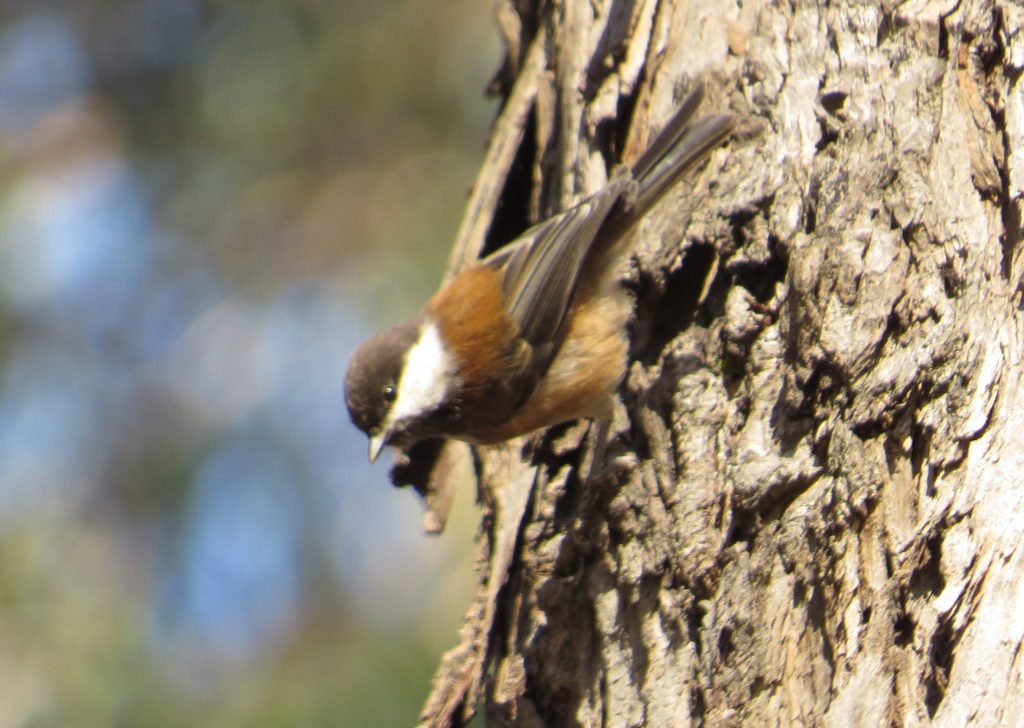 And with that, I had to close out my California birding for this time. I got a great taste of California and picked up most of the endemics and other range-limited birds. I am definitely looking forward to going back someday.
And with that, I had to close out my California birding for this time. I got a great taste of California and picked up most of the endemics and other range-limited birds. I am definitely looking forward to going back someday.